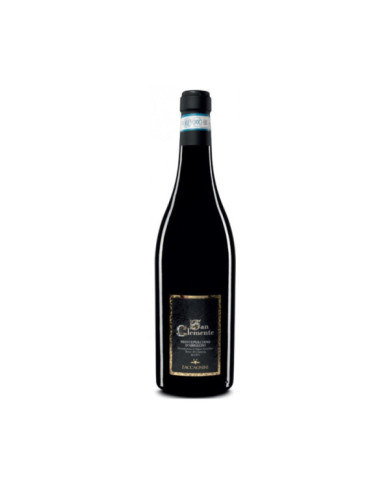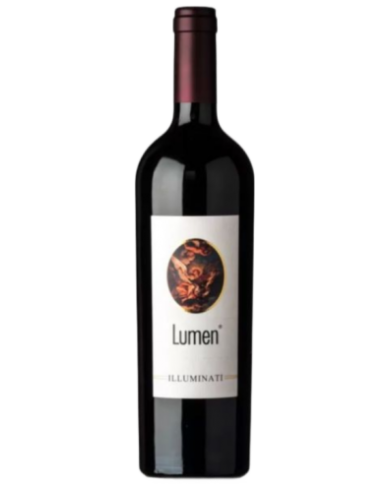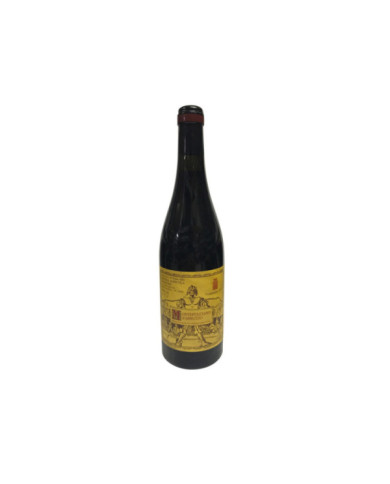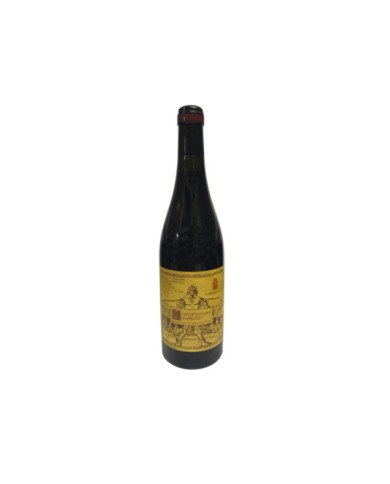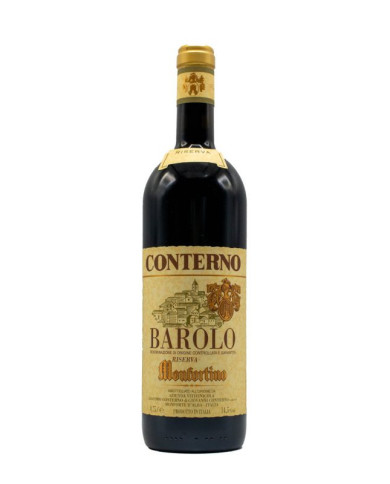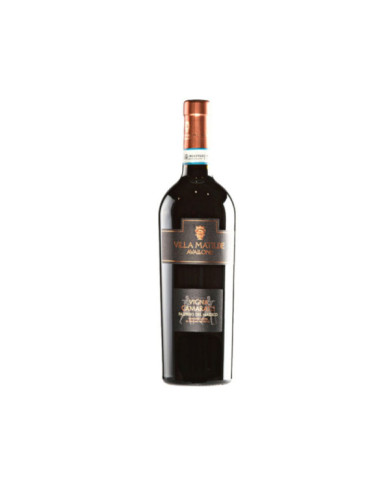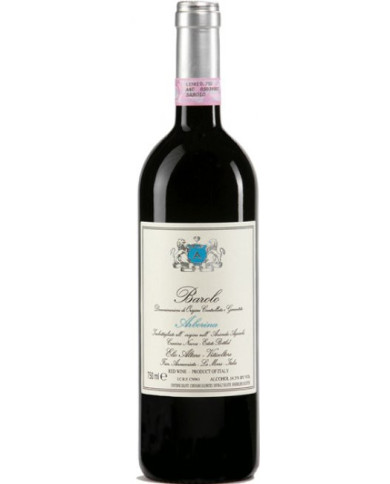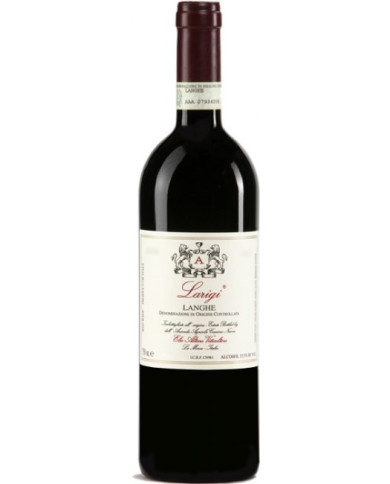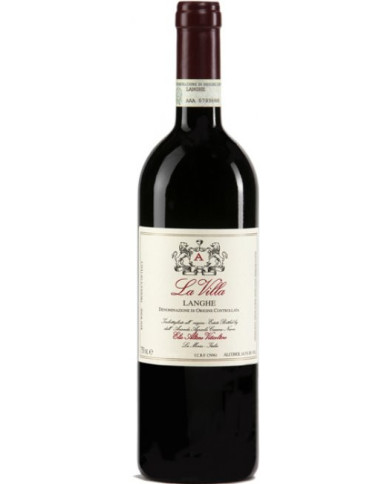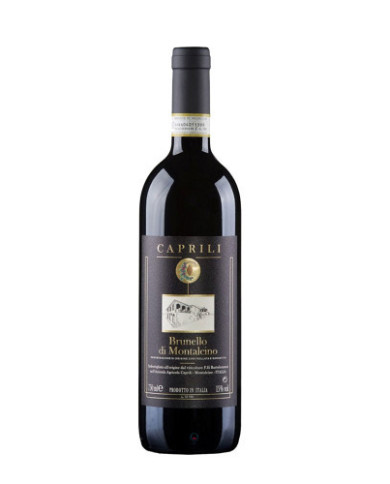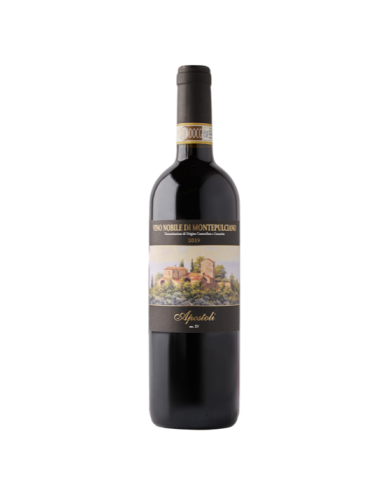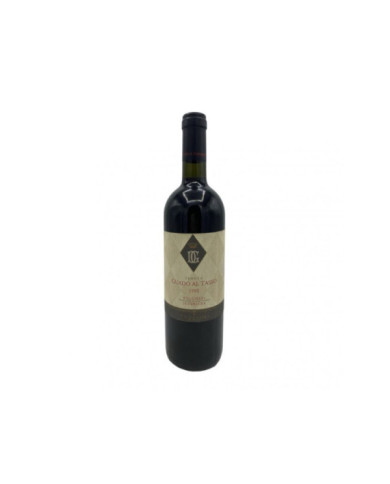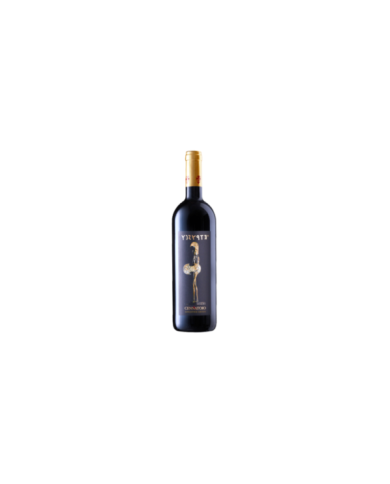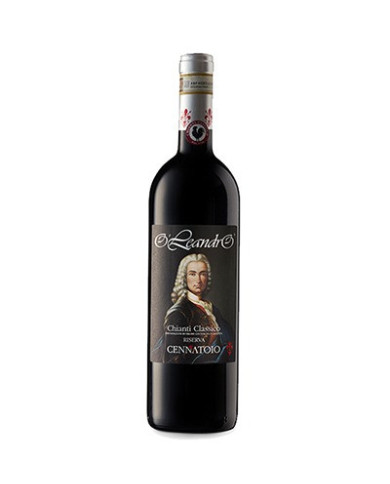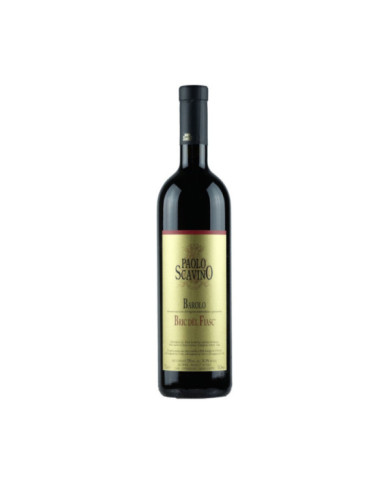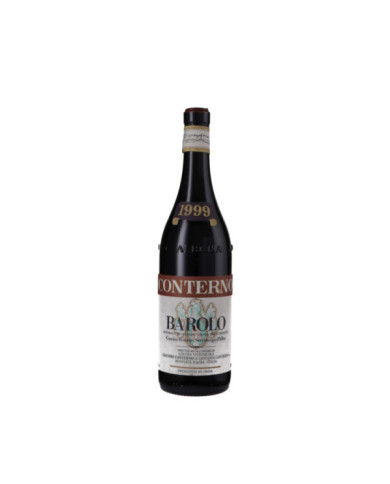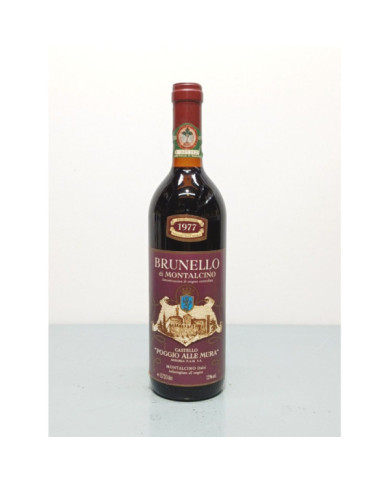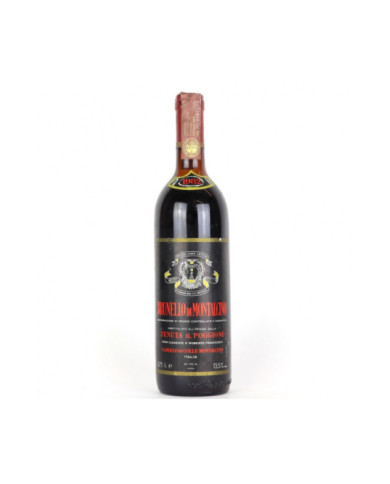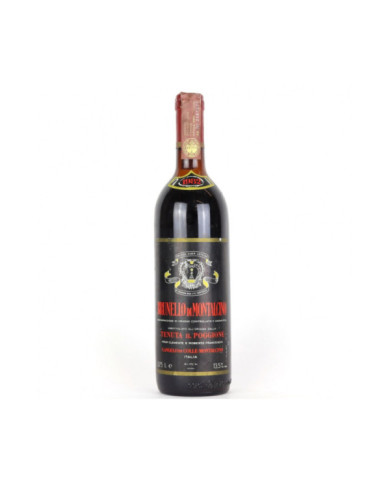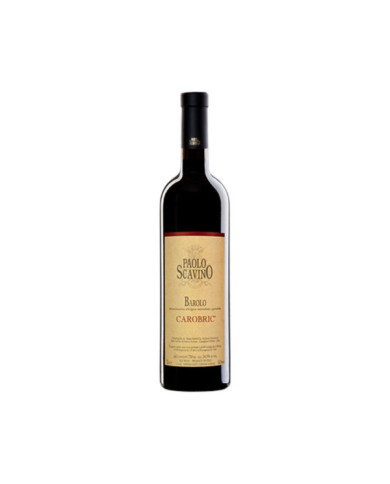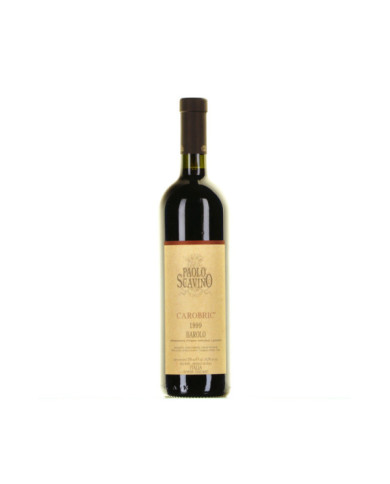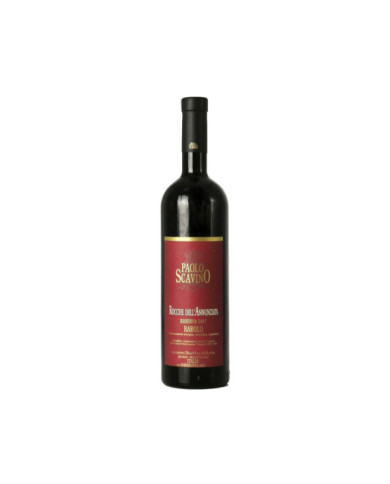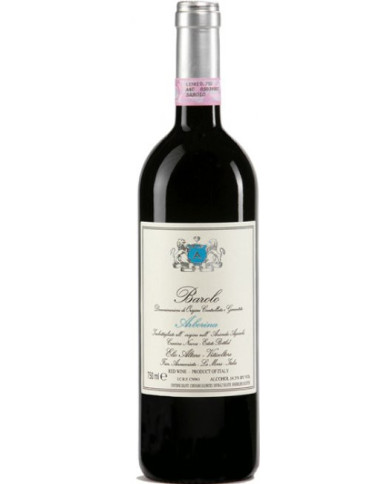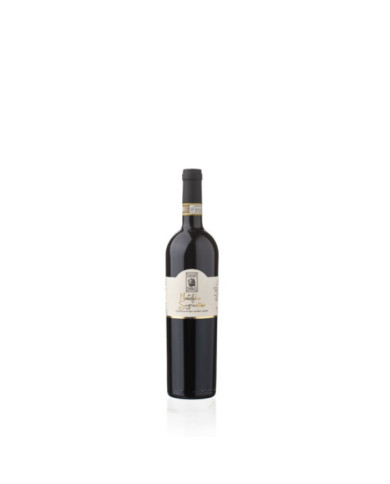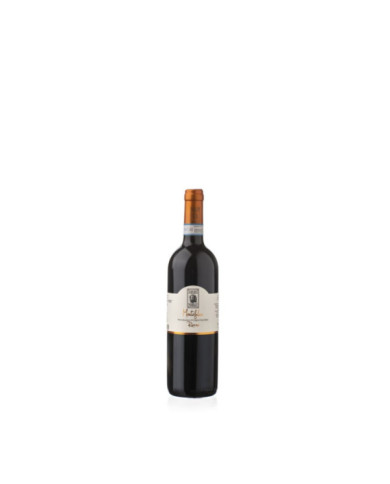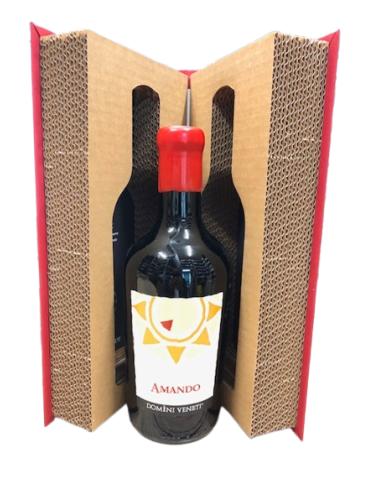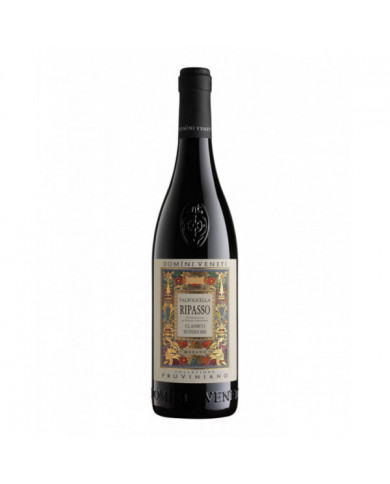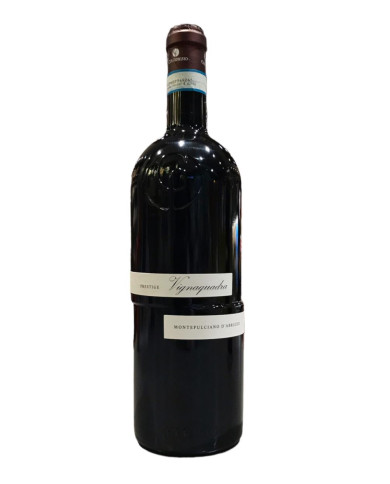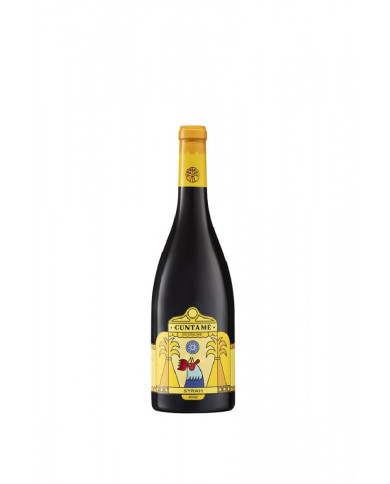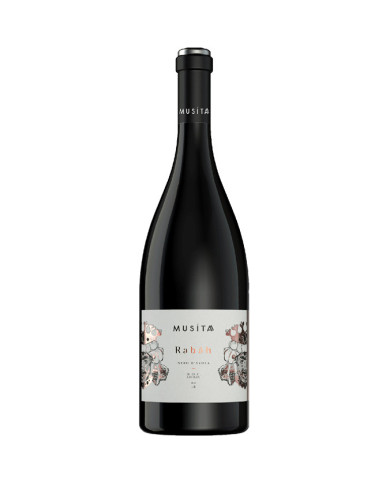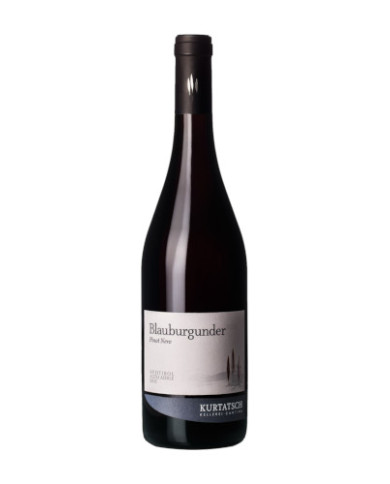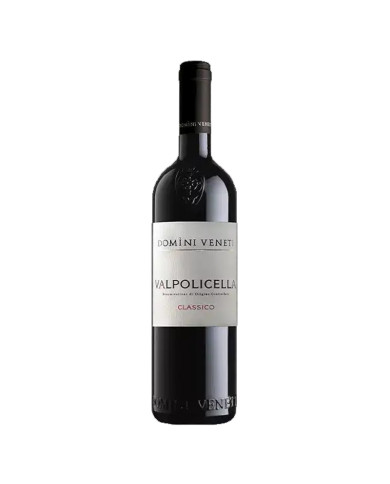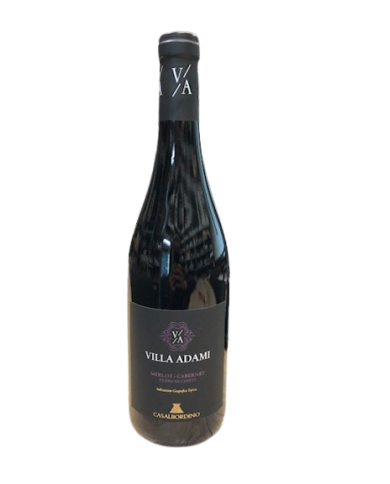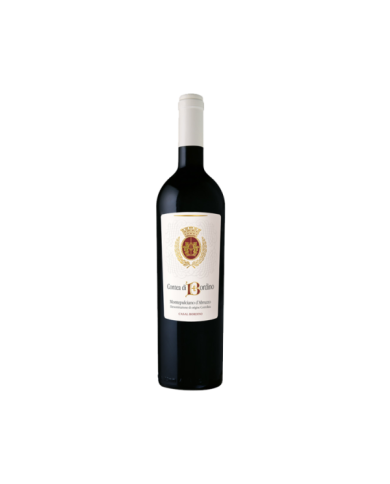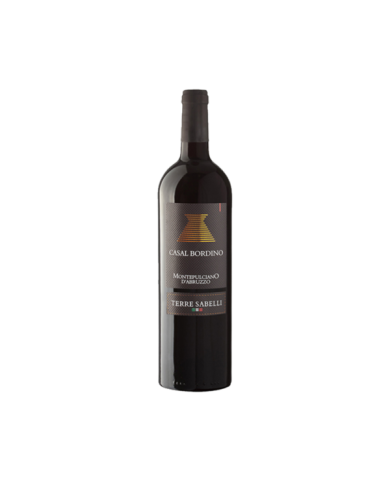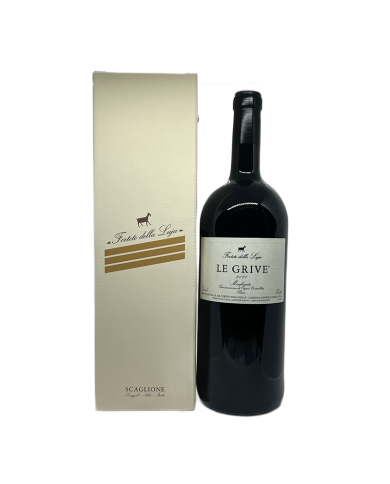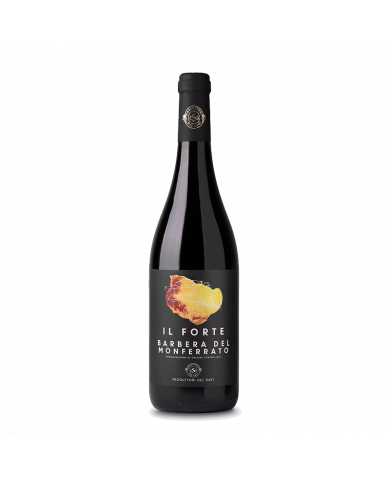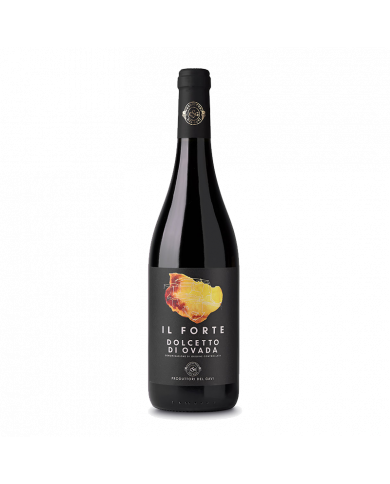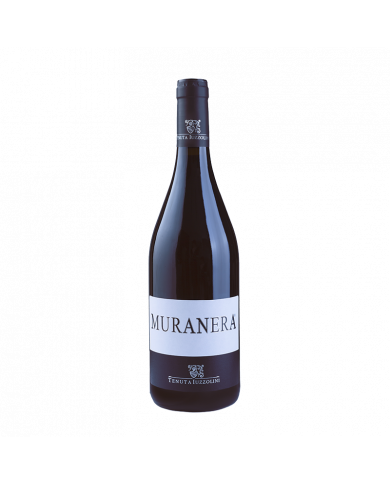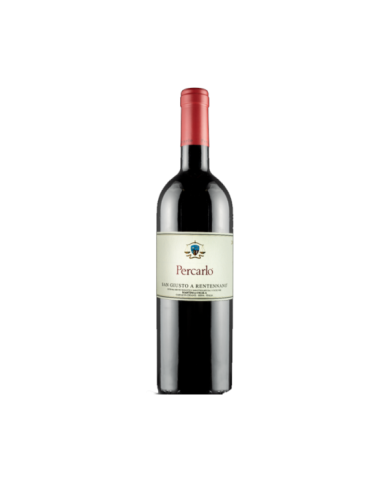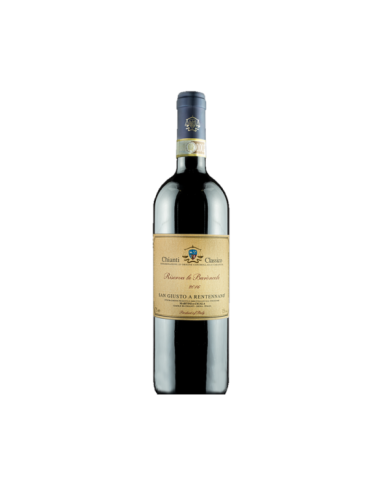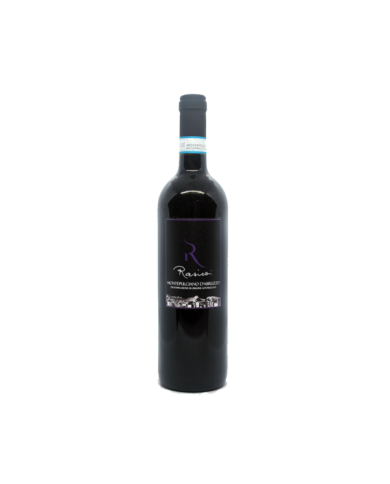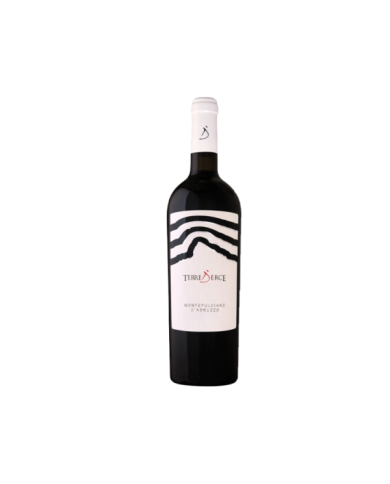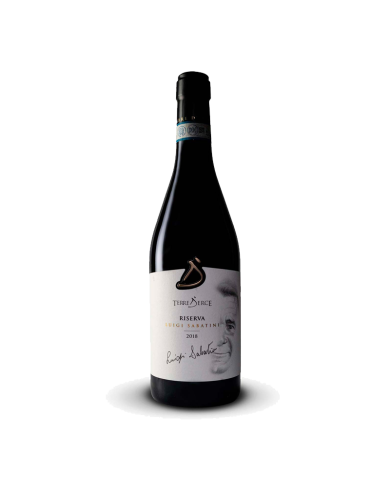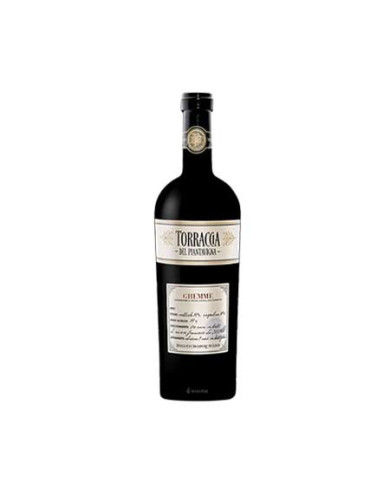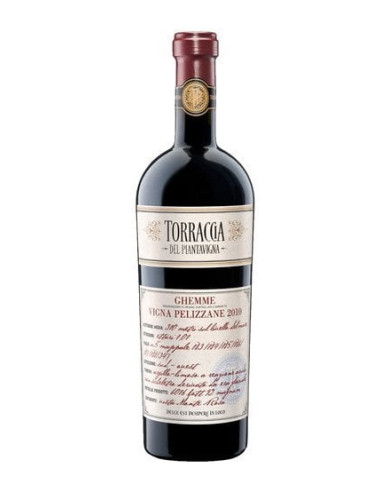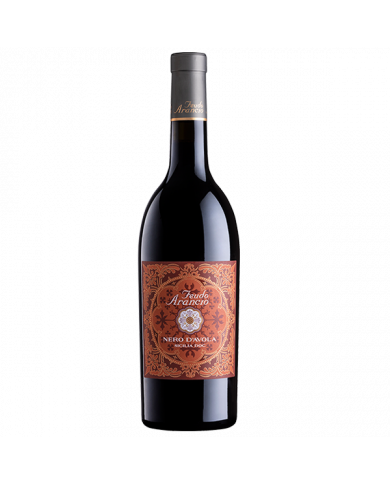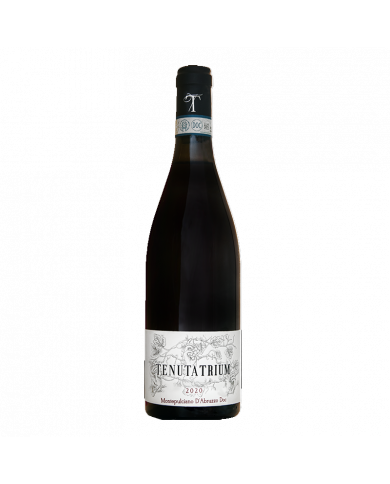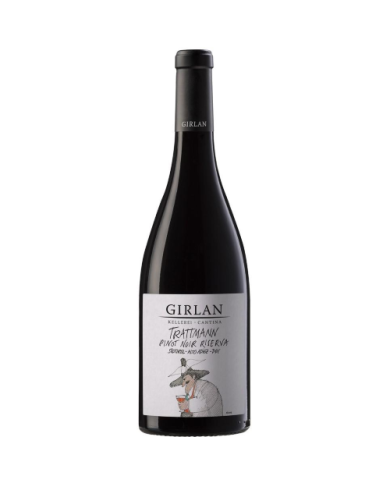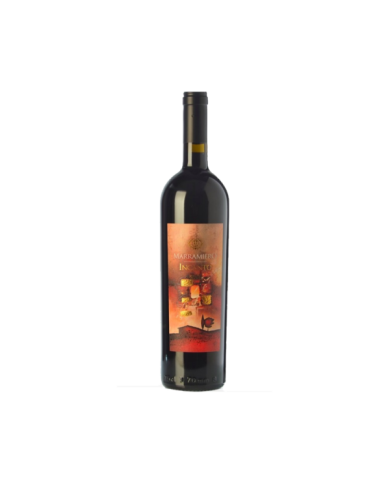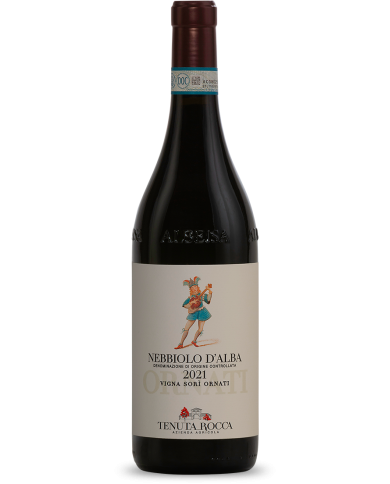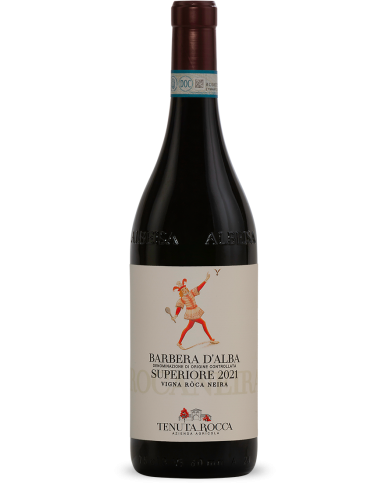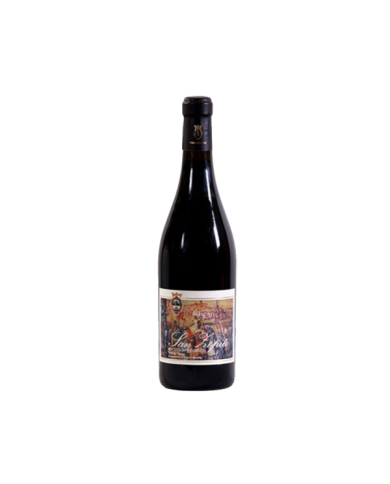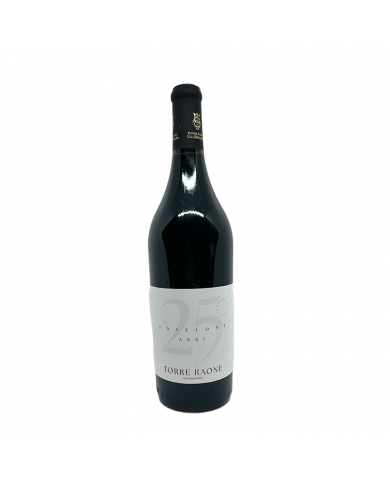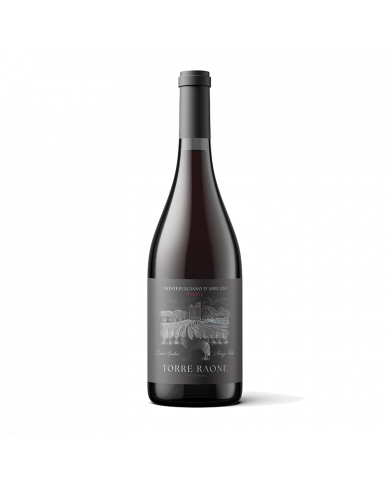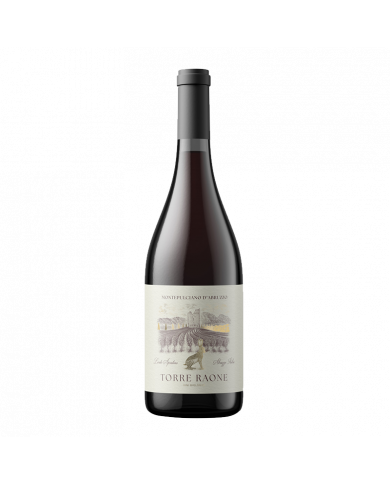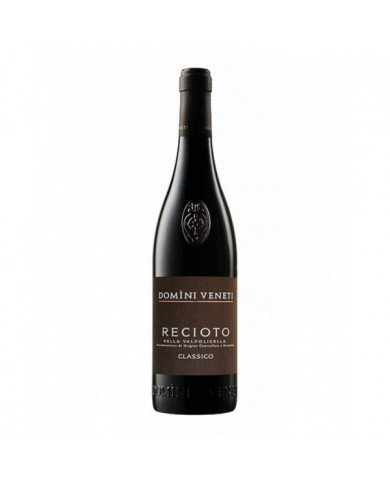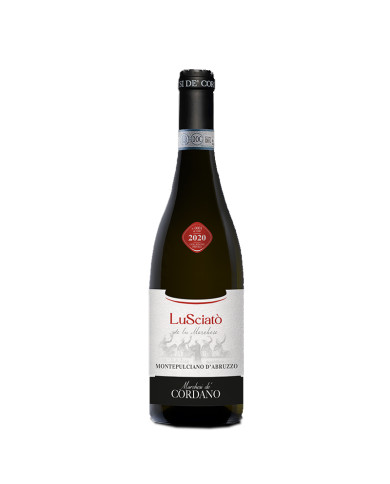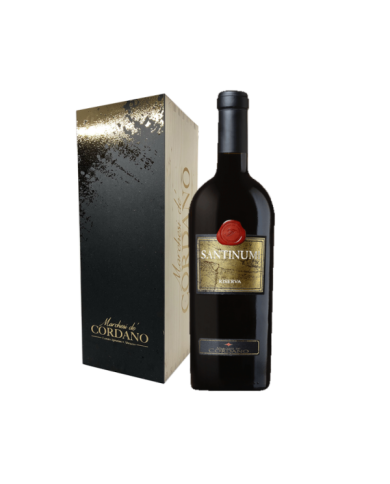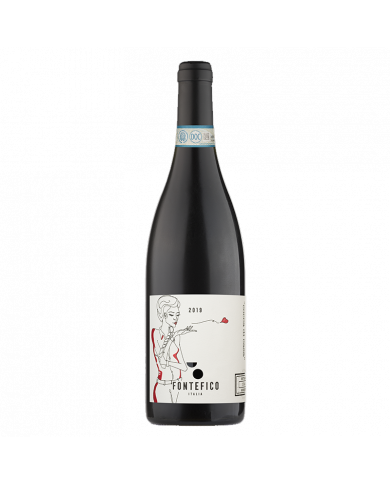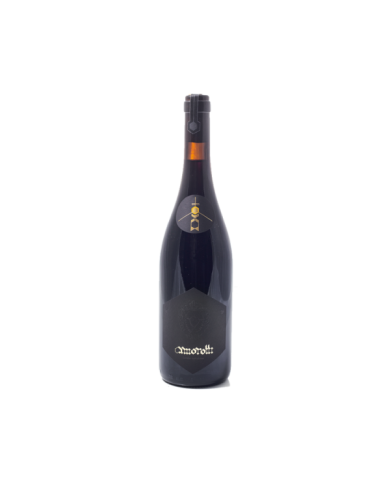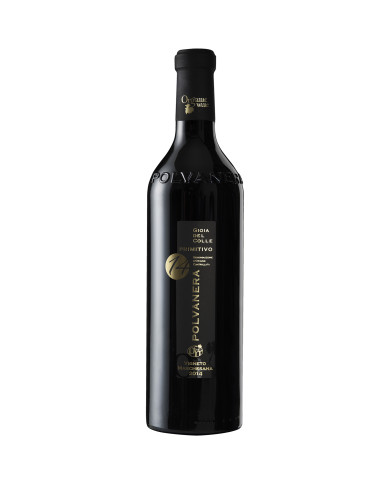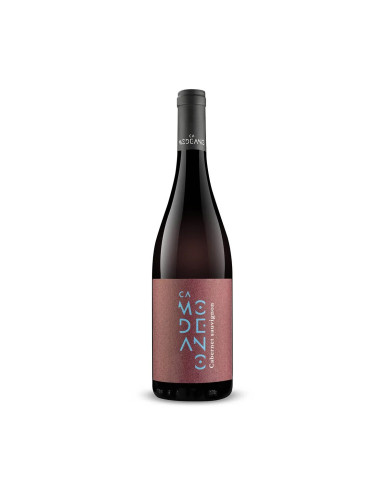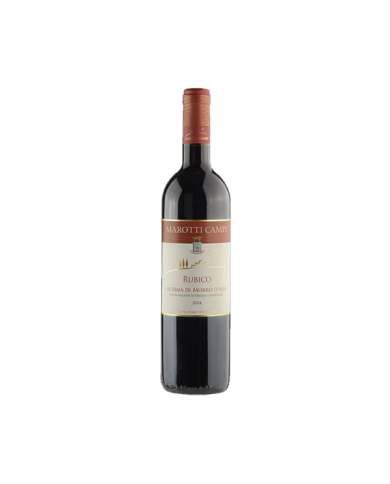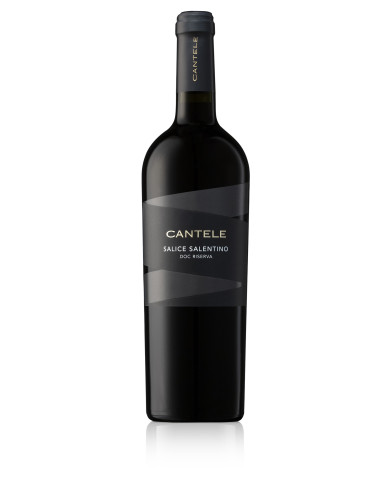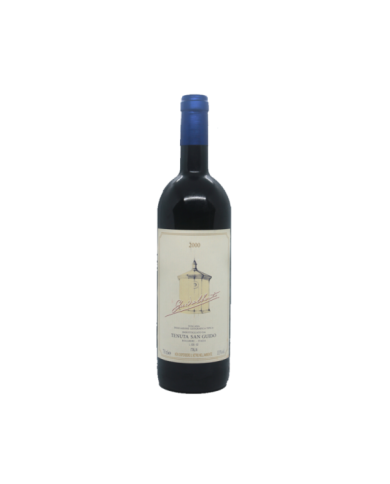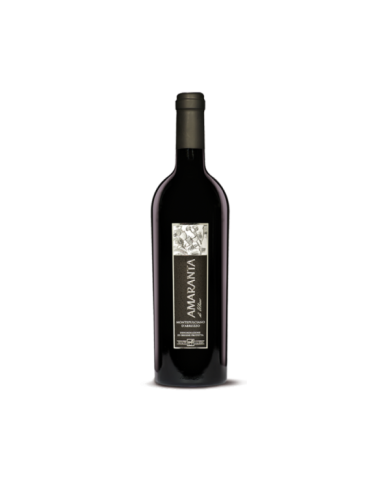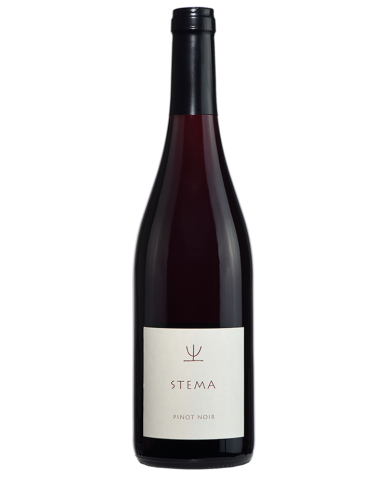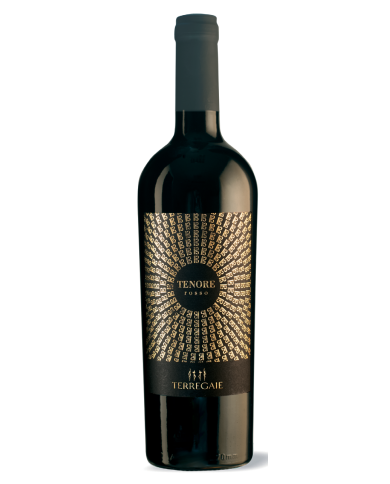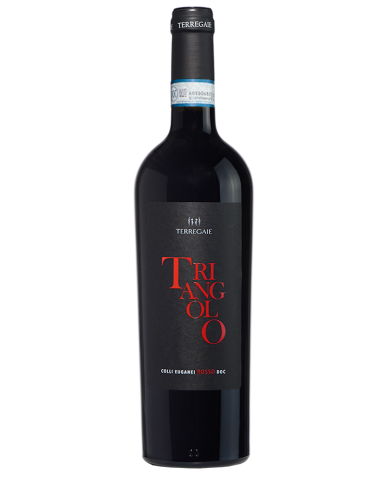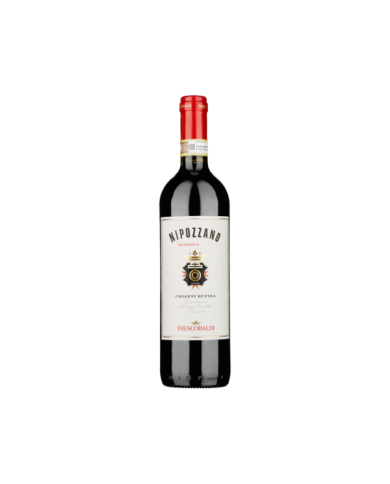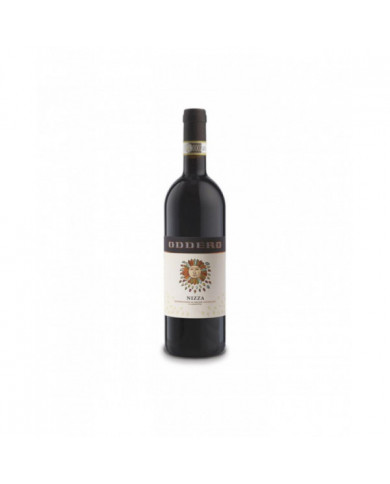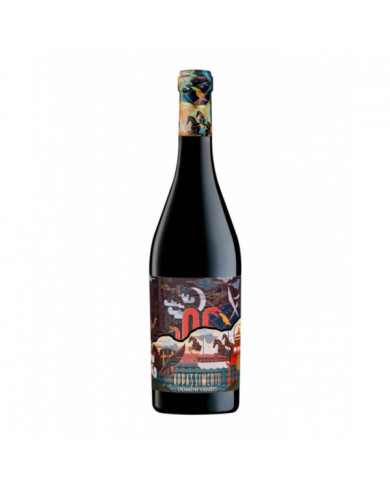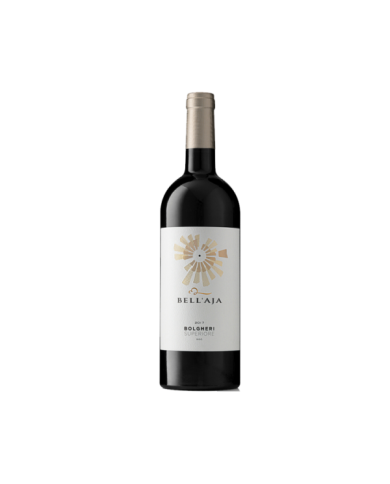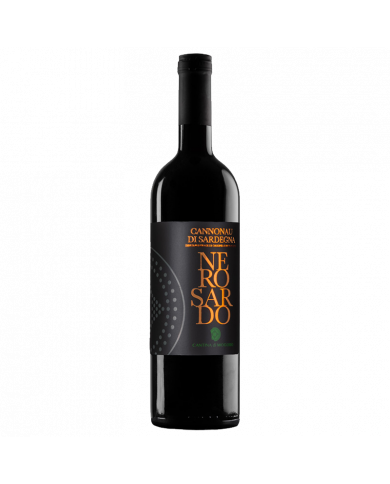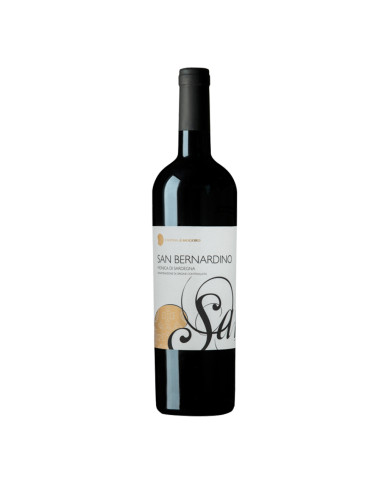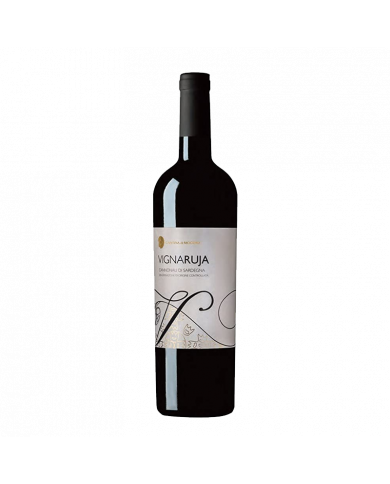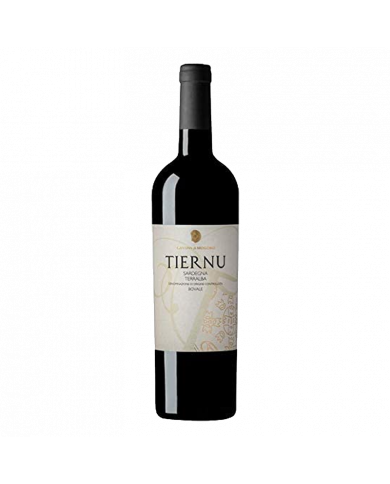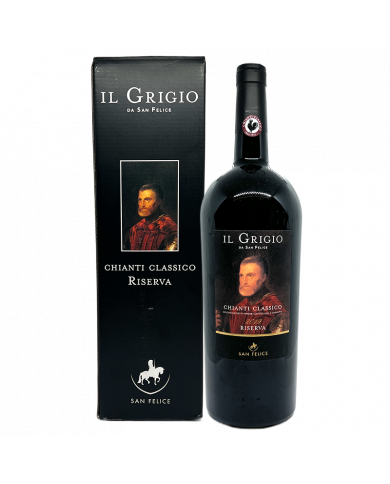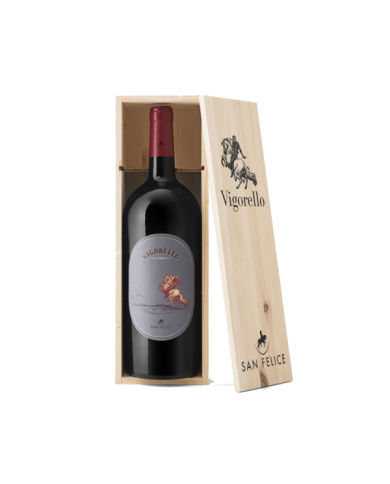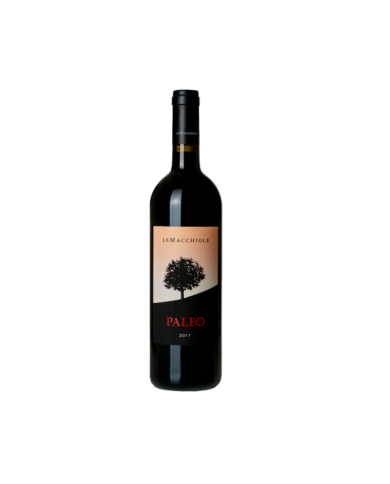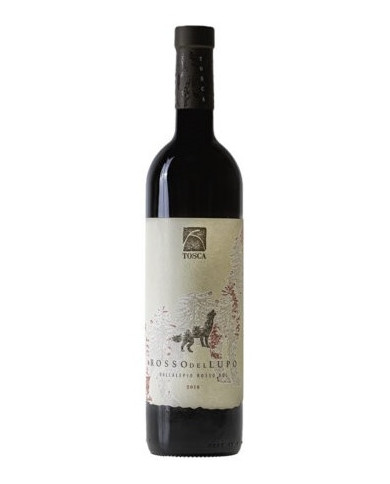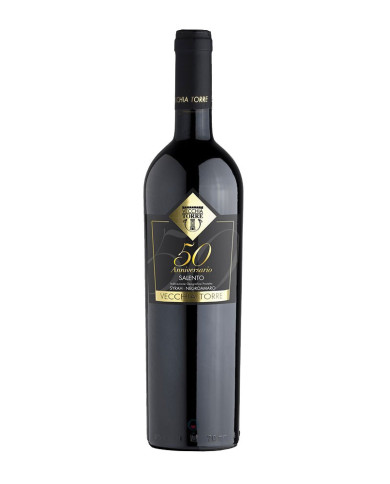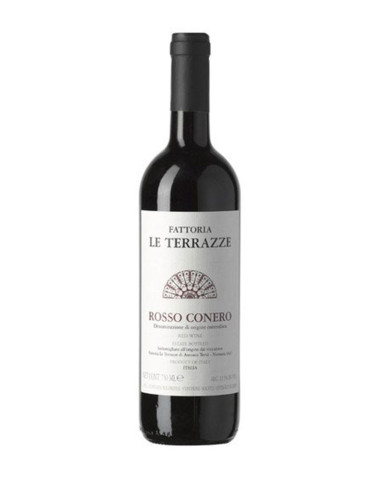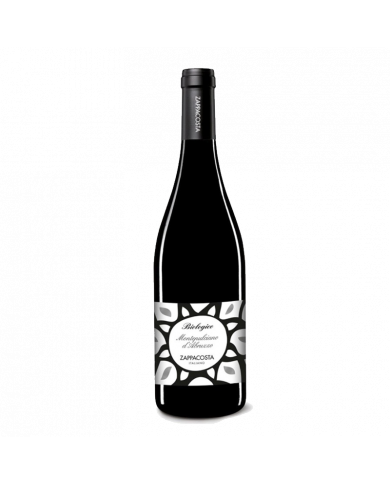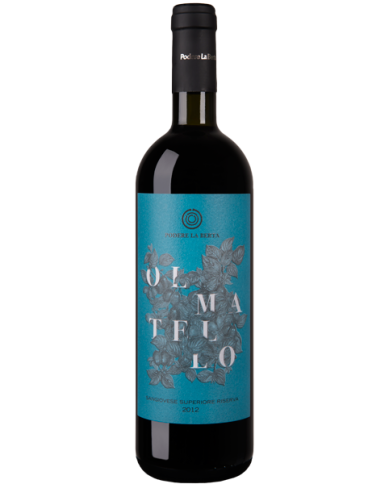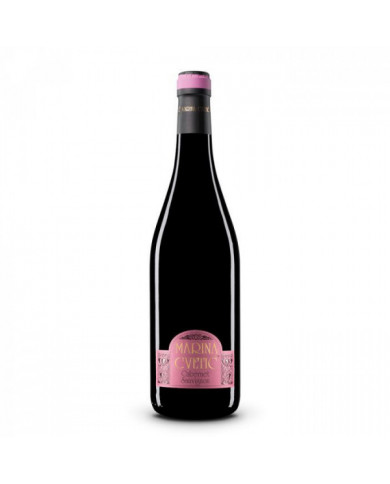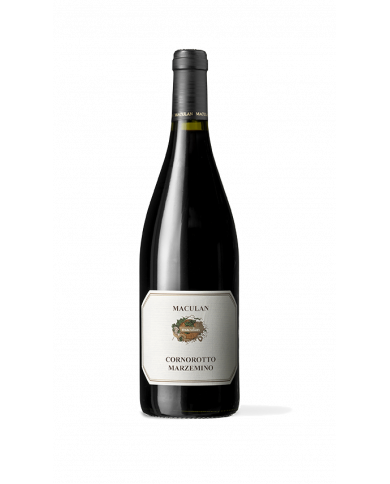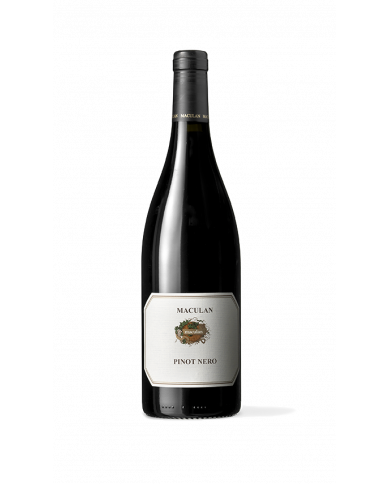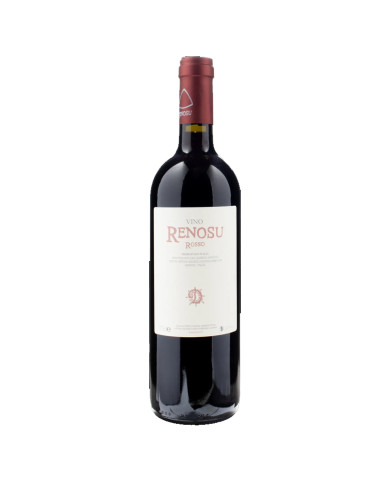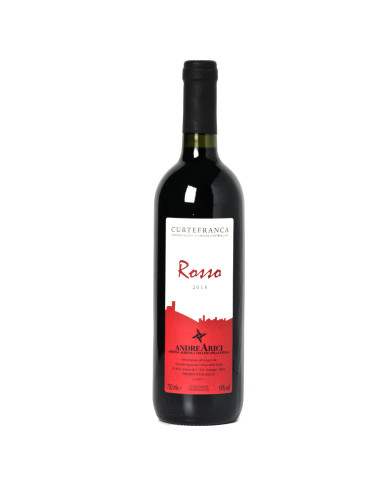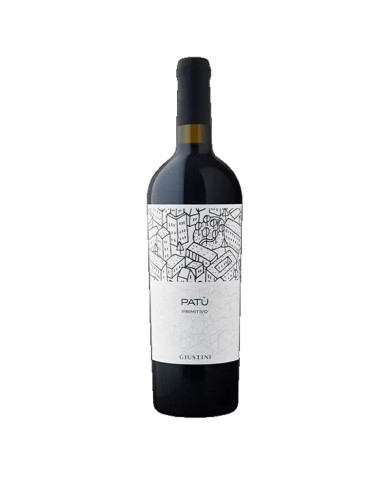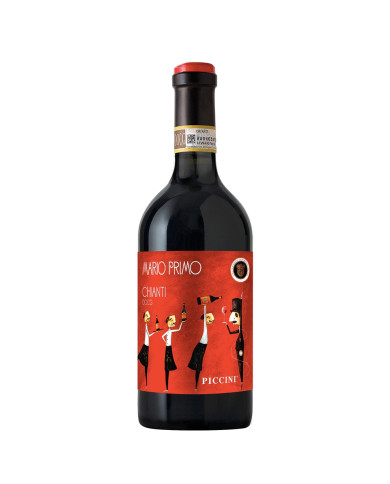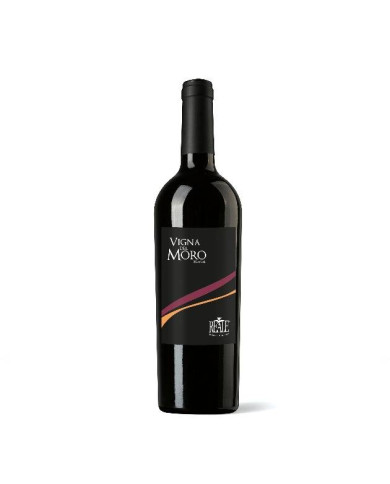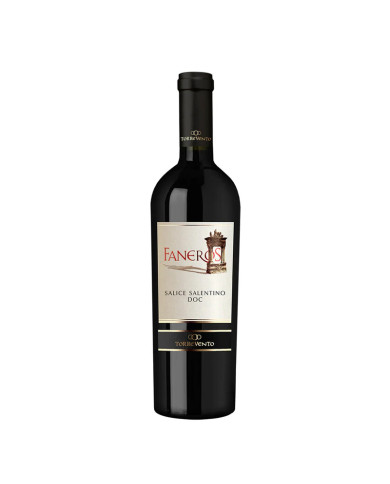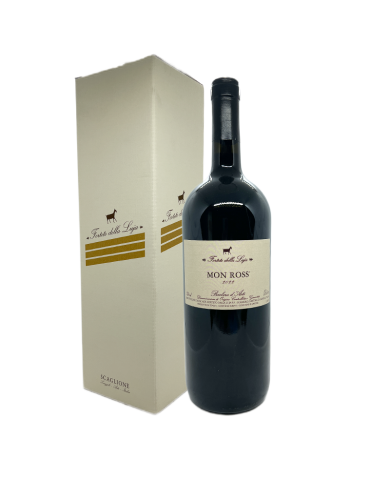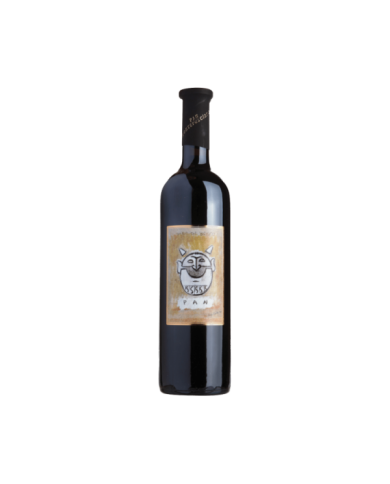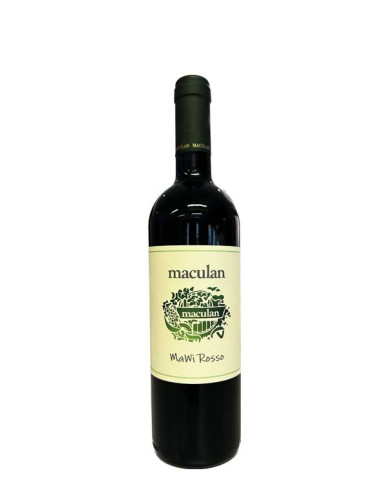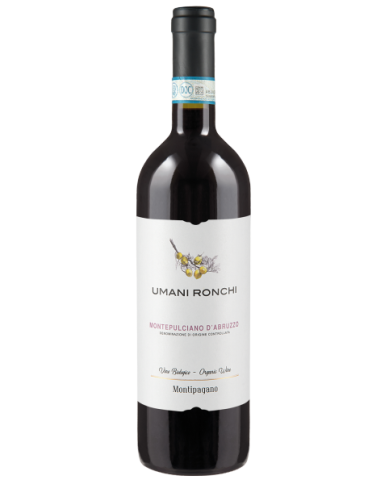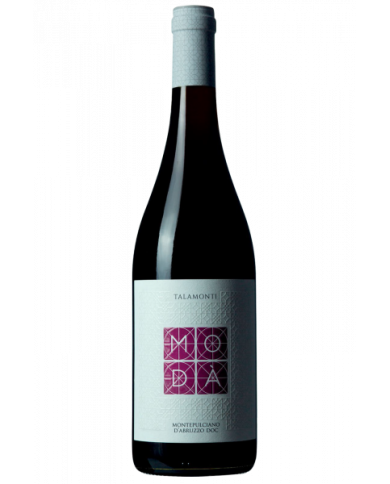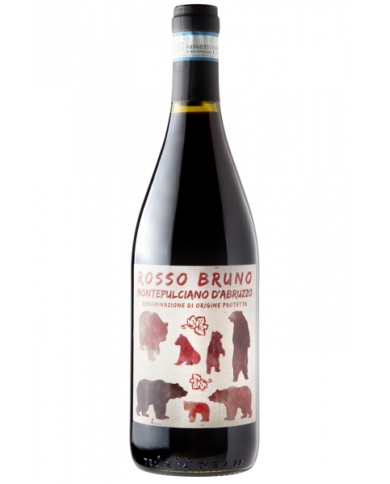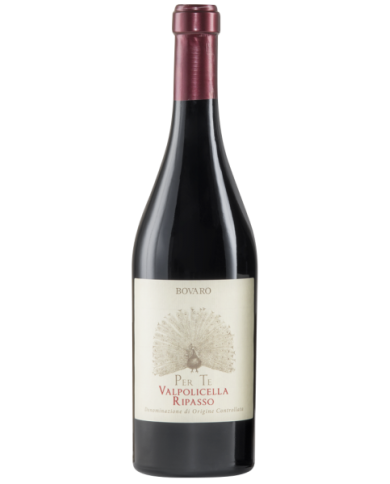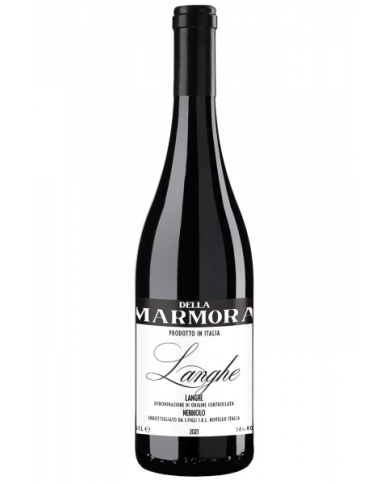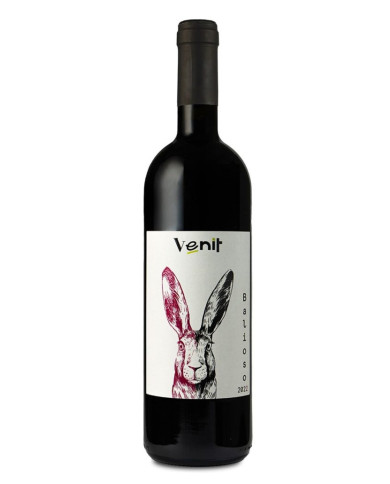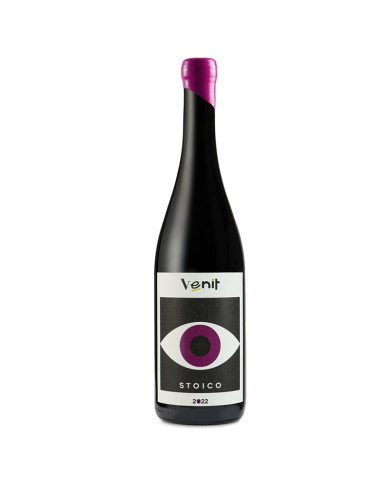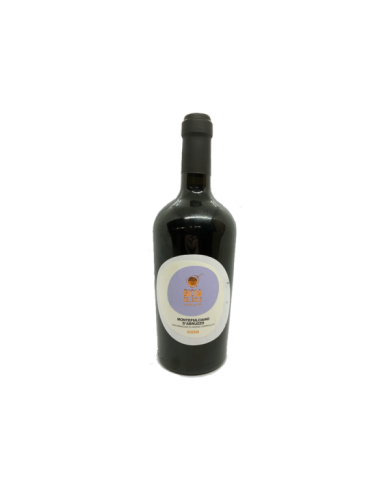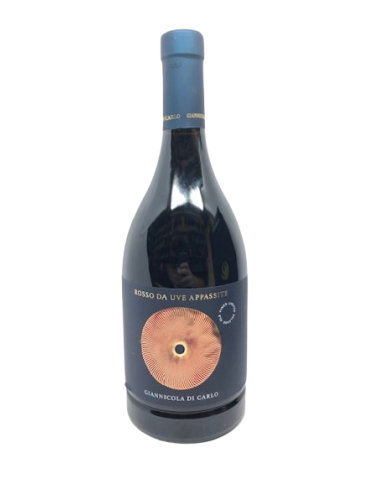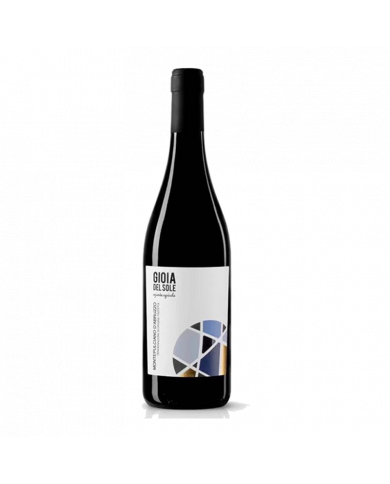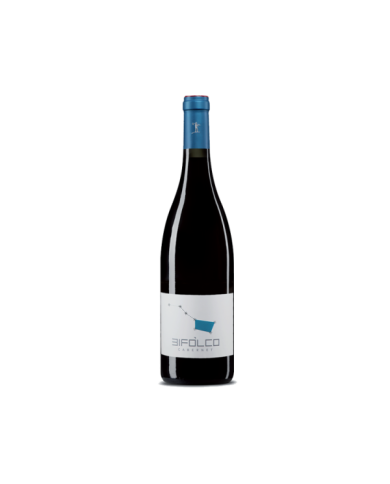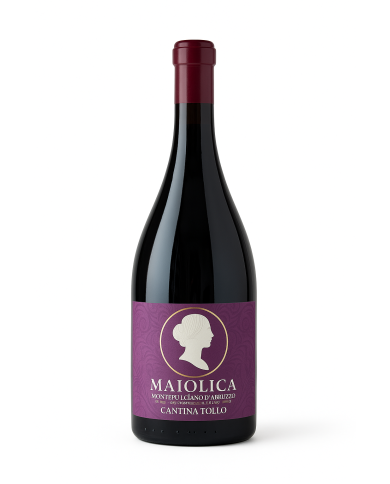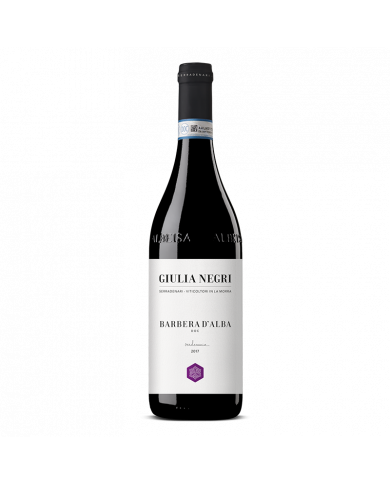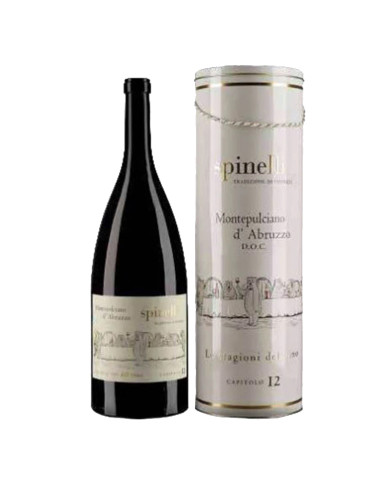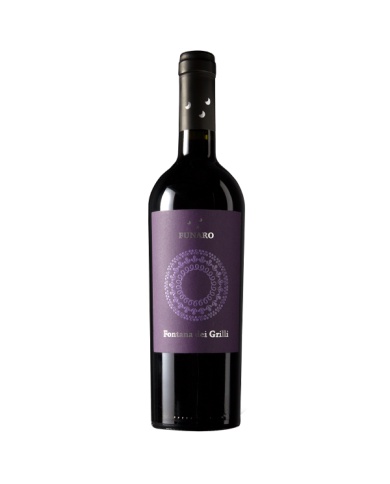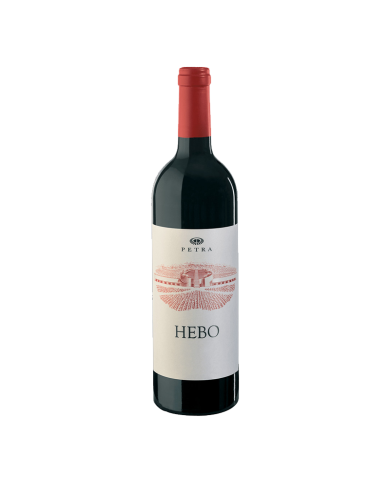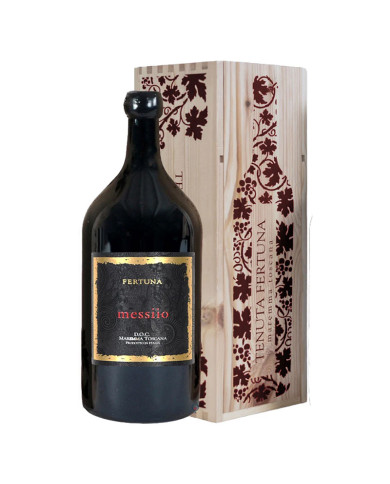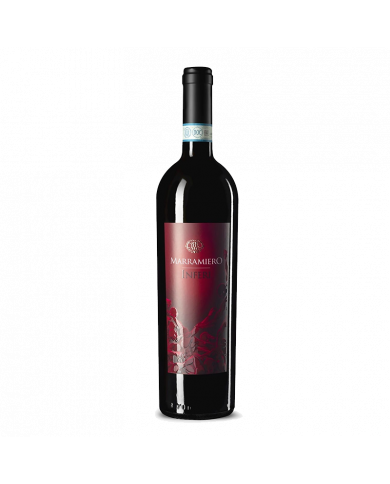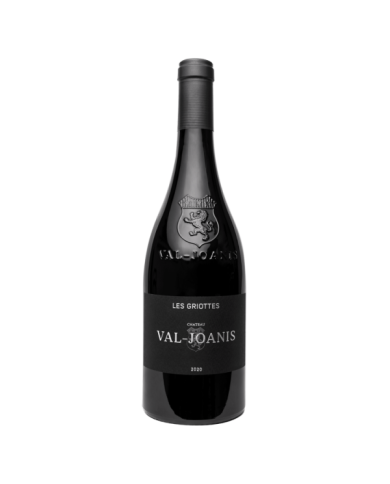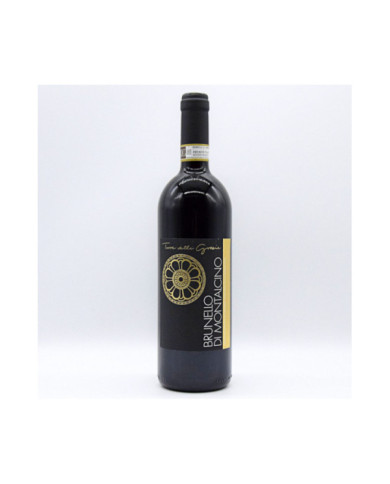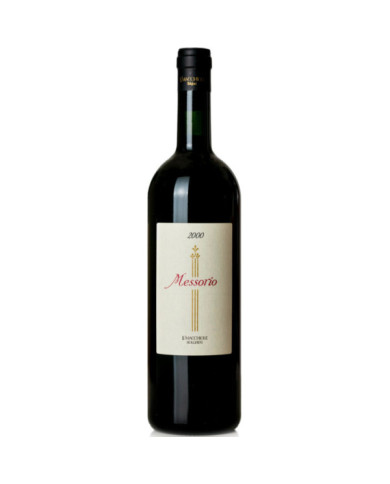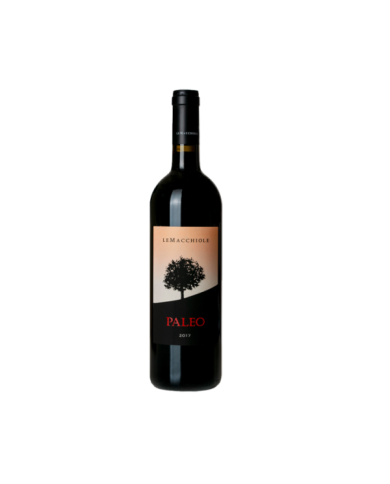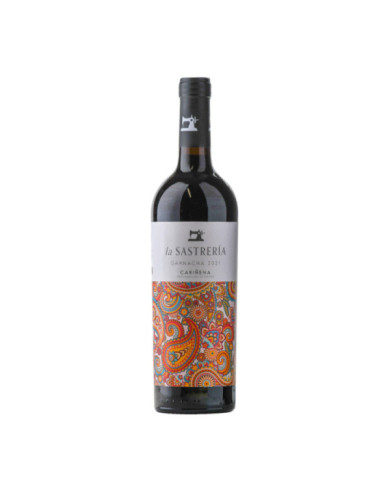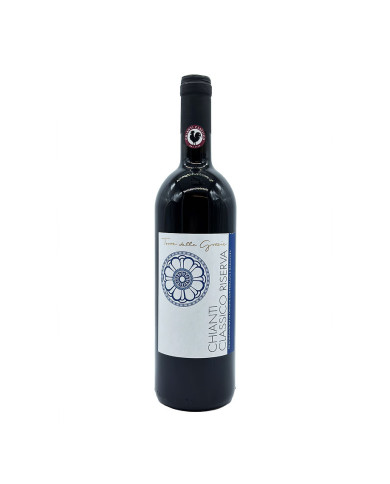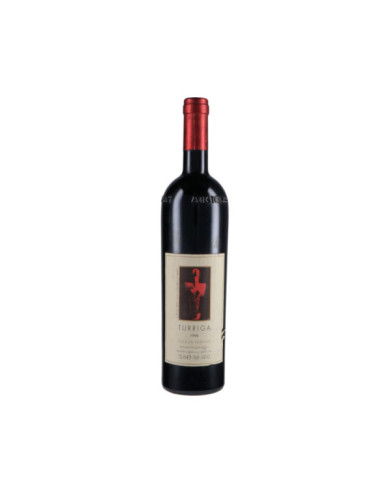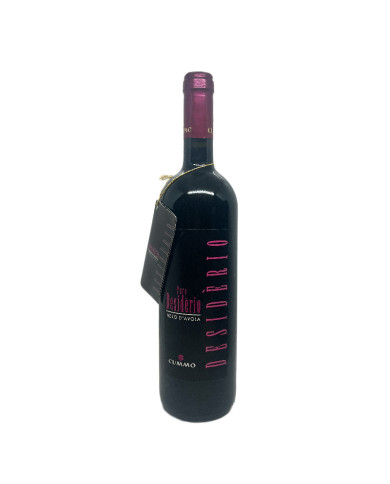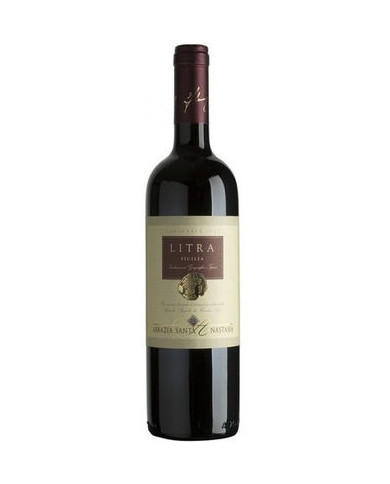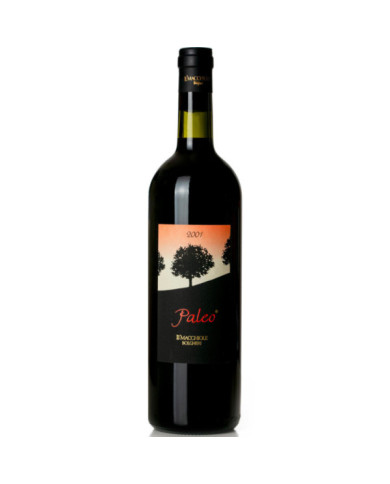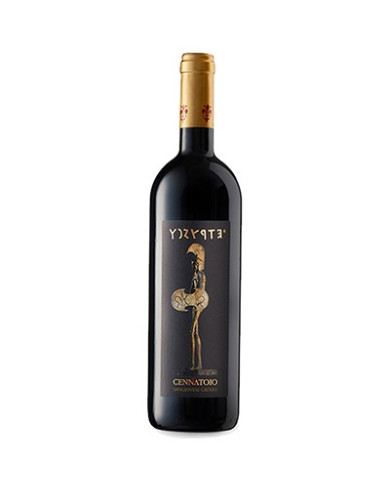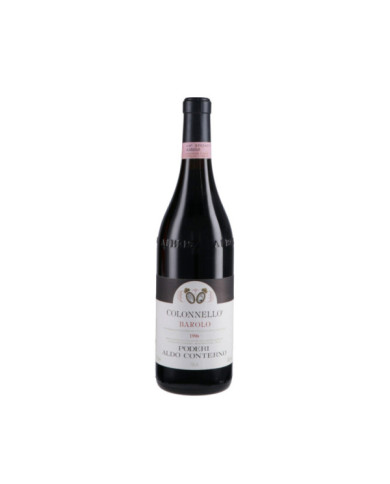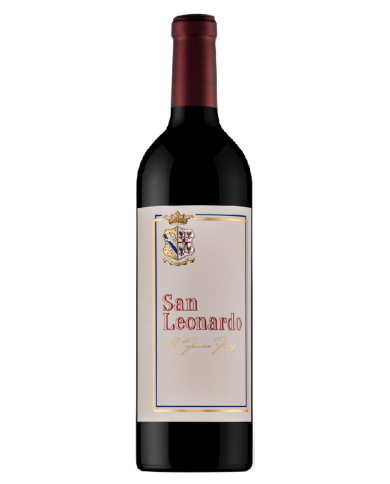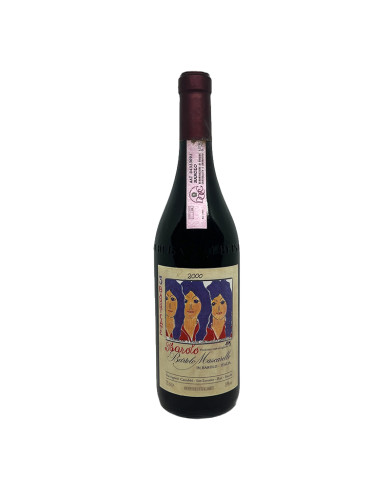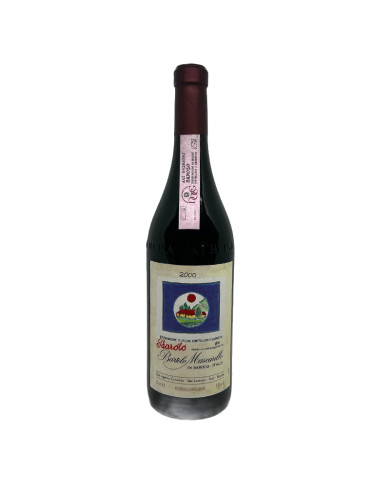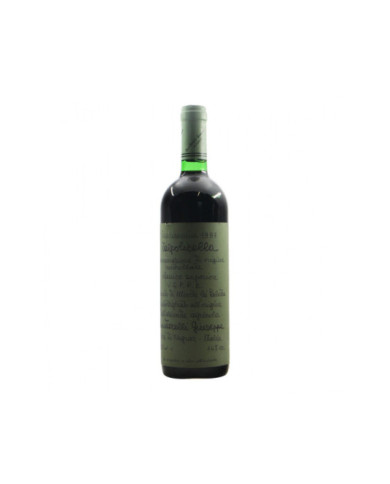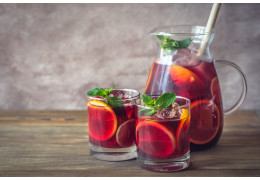Il Barolo Riserva Monfortino 1995 ├© un barolo pronto per essere bevuto, ma anche in grado di rimanere ancora per molti anni nelle vostre cantine.
Un grande classico da una grande vigna, il Barolo di Aldo Conterno proviene infatti da due diversi appezzamenti in Bussia, uno dei vigneti pi├╣ importanti di Monforte dŌĆÖAlba. Da qui, dopo unŌĆÖattenta selezione dei grappoli, le uve vengono portate in cantina per la successiva vinificazione in acciaio dove le bucce rimangono a contatto con il mosto per quasi un mese. Dopo la svinatura ed alcuni travasi il vino viene fatto maturare per oltre due anni in botti grandi di rovere. ├ł cos├¼ che nasce un Barolo di grande riconoscibilit├Ā, austero e profondo.
Prodotto da uve Merlot 100%, provenienti da zone dei nostri vigneti particolarmente adatte alle caratteristiche del vitigno, raccolte a mano a perfetta maturazione in epoca tardiva rispetto alle consuetudini locali. La fermentazione avviene in vasche di acciaio inox per circa 18 giorni ai quali segue la svinatura e la pigiatura. La fermentazione malolattica avviene spontaneamente come per tutti i nostri vini. Dopo una prima sfecciatura, il vino viene posto in barriques di rovere francese per 20-22 mesi. Una volta imbottigliato, affina ulteriori mesi in vetro.
In onore ai Monaldeschi della Cervara Il nome celebra i Monaldeschi della Cervara, storica famiglia proprietaria nel XVI secolo del Castello della Sala. La Barrique Il Cervaro della Sala ├© stato uno dei primi bianchi italiani a svolgere fermentazione malolattica ed affinamento in barrique.
COLORE: Rosso rubino. PROFUMO: Persistente con sentori floreali. SAPORE: Ottima rotondit├Ā, gentilezza e soavit├Ā, con uno spessore organolettico privo di spigolature. Ottima struttura con grande equilibrio e persistenza
Central core of succulent wild berries, violet flowers. Full-bodied wine with a fine tannic texture. Fruity finish with light spiciness.
Aging in medium-capacity oak barrels, 25 Hl, for about 18 months and refinement in the bottle for three months before placing on the market. Store in a cool place at a temperature of about 5-7┬░C.
The harvest takes place in the second week of October, when the phenolic maturity is reached with manual harvesting. VITIFICATION: destemming of the grapes, contact of the skins with the must for 7-10 days in a steel vat at a T┬░ from 18 to 28 ┬░C, separation of the skins and transfer of the must-wine into a steel tank for the completion of the fermentation malolactic. REFINING - STORAGE: maturation in steel tanks for 5-6 months and brief refinement in the bottle before being released for consumption.
INTENSE RED COLOR WITH GARNET REFLECTIONS. THE NOSE IS FRUITY AND ELEGANT, WITH AROMAS OF RIPE PLUM AND MARASCA MARASCA AND HINTS OF VIOLET. YOUNG ON THE PALATE, RICH IN PULP, EXCELLENT ACID FRESHNESS. EXCELLENT WITH TASTY FIRST COURSES, RED MEAT AND GAME.
INTENSE RED WINE WITH PURPLE REFLECTIONS, CHARACTERIZED BY A DELICATE BUT INTENSE AROMA, WITH NOTES OF RIPE RED FRUIT. THE FLAVOR IS DRY, WITH A BITTER-ALMOND AFTERTASTE. FULL-BODY, PERSISTENT, WITH ELEGANT STRUCTURE. SUITABLE FOR TASTY FIRST AND SECOND DISHES BASED ON MEAT, MUSHROOMS AND TRUFFLES.
The Muranera of Tenuta Iuzzolini is a purple red wine with clear violet reflections. It has an intense aroma, with fruity, sweet and ripe scents, balsamic and floral notes of violet on a slight tobacco accent at the end. Grapes: Gaglioppo, Magliocco, Cabernet Sauvignon and Merlot.
Produced from 100% Merlot grapes, coming from areas of our vineyards particularly suited to the characteristics of the vine, hand-picked when perfectly ripe in a late period compared to local customs. Fermentation takes place in stainless steel tanks for about 18 days, followed by racking and pressing. The malolactic fermentation occurs spontaneously as for all our wines. After a first racking, the wine is placed in French oak barriques for 20-22 months. Once bottled, it ages a further 6 months in glass.
Percarlo is a robust and structured Tuscan red wine made from Sangiovese grapes, aged in barrique for 22 months. It has a broad and very intense aromatic profile, with notes of very ripe red fruit, spices and Mediterranean scrub in evidence. The sip is powerful, elegant and deep, with a very long persistence
Percarlo is a robust and structured Tuscan red wine made from Sangiovese grapes, aged in barrique for 22 months. It has a broad and very intense aromatic profile, with notes of very ripe red fruit, spices and Mediterranean scrub in evidence. The sip is powerful, elegant and deep, with a very long persistence
The Chianti Classico Riserva "Le Baroncole" expresses the richness and beauty of the Tuscan land. Refines for 16-20 months in oak barrels and casks and is enriched with vanilla nuances, in addition to the already present fruity and spicy aromas typical of the type. The taste is balanced, complex and deep, supported by a nice tannic texture and a pleasant savory tip
Clear, with an impenetrable ruby color, it still has purplish violet notes, a sign of great youth, very concentrated, with a rich glycerine expression. Intense nose of ripe red fruits, especially undergrowth, which reaches humus and closes on the typically Abruzzo licorice root. Firm and austere softness on an important and still vibrant tannic framework. The freshness of the acids and the flavor? mineral give balance to a warm and soft body. Long persistent intense finish with the return of all the fruity sensations perceived on the nose. Wine already? in harmonic expression with the capacity? to mature for a long time.
┬Ę Color : red, with violet reflections and garnet notes. Bouquet: hints of cherry and red fruits that bind to a balanced vanilla bouquet of the wood. Taste : notes of cherries, red fruits, licorice and spices. Full-bodied and persistent, with an important tannic profile. PAIRING ┬Ę Important dinners with roasted red meats, game and aged cheeses.
Montepulciano DOC100% with vineyards on the hills, with clayey soils that tend to be calcareous. The breeding is pergola Abruzzo with thirty-year vines, 1600 vines per hectare with a yield of 100 q.
With an enveloping scent and balanced, it is a wine with a bouquet harmonious where each olfactory component does not prevail over the other.
The "Vigna Pelizzane" is a Ghemme of great structure and good complexity, aged for at least 4 years in large barrels. The aromas are intense and mineral and the taste is soft and vibrant, dry and fresh, with vigorous tannins and a long persistence on the finish
Prince of the enological renaissance of Sicily, Nero d'Avola is a native vine of great value. Initially widespread in the Syracuse area, it is now extended to all the wine-growing areas of the island. It is a medium-early variety that ripens around the first week of September and requires low-clayey soils and is sensitive to excessive drought and exposure to the sun. The type of training used is espalier, with an average planting density of 4,500 plants per hectare. Harvesting of the grapes at perfect aromatic and polyphenolic maturation, destemming and alcoholic fermentation with the skins for 6-8 days at 22-24┬░C, malolactic fermentation with selected bacteria, maturation for 6 months in French oak barriques.
The freshly picked grapes are de-stemmed and crushed. The fermentation of the must follows with its own skins for a period ranging from 8 to 15 days. Finally the skins are separated with soft pressing in wooden presses.
Color rosso rubino con lievi sfumature granate, profumi intensi e complessi con sentori di frutta matura, ciliegia e marasca. Gusto morbido delicato, vinoso e tannini fruttati, di buona struttura e persistenza. Ottimo vino da pasto, particolarmente adatto agli arrosti, cacciagione ed ai formaggi piccanti.
Color rosso rubino con lievi sfumature granate, profumi intensi e complessi con sentori di frutta matura, ciliegia e marasca. Gusto morbido delicato, vinoso e tannini fruttati, di buona struttura e persistenza. Ottimo vino da pasto, particolarmente adatto agli arrosti, cacciagione ed ai formaggi piccanti.
Color rosso rubino con lievi sfumature granate, profumi intensi e complessi con sentori di frutta matura, ciliegia e marasca. Gusto morbido delicato, vinoso e tannini fruttati, di buona struttura e persistenza. Ottimo vino da pasto, particolarmente adatto agli arrosti, cacciagione ed ai formaggi piccanti.
At tasting it has an intense and deep ruby red color with purple hues. Perfectly ripe and highly concentrated aromas. A mellow and harmonious fruitiness that offers hints of plum, date and fig. All fused with fine spicy notes. Pulpy and persuasive taste. It goes well with first courses with a good structure, roasts, stewed red meat, cold cuts and cheeses, including aged cheeses.
On the nose the wine is ethereal and floral with the sweet notes of violet typical of the vine; red fruit, plum and spices in the background. The mouth is pleasantly fresh and balanced and the soft and enveloping tannins make it an elegant but not too austere drinkable wine.
Intense purplish ruby red color with violet reflections. Intense nose of red fruits (raspberry and black cherry) and fine spices. In the mouth the marked but sweet acidity makes it round and full; in closing notes of toasted hazelnut.
Deep garnet red color, intense and consistent in the glass. Wild black cherry, plums, blackberries and ripe currants: the nose opens on clear fruity notes, and then also perceives floral nuances of violet, as well as clear tertiary references of vanilla, chocolate, cinnamon, pepper and licorice. Balsamic nuances and officinal herbs complete the olfactory picture. The tannins on the palate are sculpted with chisel, the sip is warm and soft, with excellent persistence.
It goes very well with red meat. Try it with the tagliata with balsamic vinegar.
Dress the glass in a beautiful ruby red. The nose first reveals memories of black cherries, plums and black currant, then completed by spicy, herbaceous and medicinal herbs nuances. Warm and soft the sip, rightly tannic and slightly savory, characterized by a finish that recalls licorice and black pepper.
To combine with meat dishes, it is excellent with roast lamb chops.
Montepulciano d'Abruzzo Riserva di Torre Raone is a rich and fruity red wine of medium body, vinified only in steel. It gives off aromas of wild berries, red fruit, flowers and black cherries and on the palate it is soft, warm, enveloping and fruity, with pleasant and smooth tannins.
Torre Raone 's Montepulciano d'Abruzzo is a medium-bodied, rich and fruity red wine, vinified only in steel. It gives off aromas of wild berries, red fruit, flowers and black cherries and on the palate it is soft, warm, enveloping and fruity, with pleasant and smooth tannins.
Recioto della Valpolicella Docg Classico is the symbol of the Valpolicella Classica viticulture based on the particular process of natural drying of the ripest grapes. It is considered the origin of Amarone, and its history is ancient, it can even be traced back to the time of the ancient Romans.
The lively nuances of red please the eyes of this wine, which presents itself with hints of ripe red fruit, cherries, plums and floral notes. The soft tannins give great drinkability and pleasantness. Vinification: 7-10 days on the skins with pumping over in the air, followed by aging in steel and 9 months in 25hl wooden barrels.
The complexity of this intense ruby red wine, sensual and enveloping, is expressed in the bouquet that immediately recalls withered flowers and red fruit jam. A pleasant spiciness of licorice, black pepper, cloves and vanilla emerges with toasted hints of coffee and tobacco. Maximum Expression: 12-15 years. Vinification: Short drying in the vineyard, permanence of 20 - 22 days on the skins with pumping over in the air, followed by static decanting in large barrels. Subsequently the wine is left to refine for 12 months in 50 hl barrels and 12 months in barriques and then rests for 12 months in the bottle.
The complexity of this intense ruby red wine, sensual and enveloping, is expressed in the bouquet that immediately recalls withered flowers and red fruit jam. A pleasant spiciness of licorice, black pepper, cloves and vanilla emerges with toasted hints of coffee and tobacco. Maximum Expression: 12-15 years. Vinification: Short drying in the vineyard, permanence of 20 - 22 days on the skins with pumping over in the air, followed by static decanting in large barrels. Subsequently the wine is left to refine for 12 months in 50 hl barrels and 12 months in barriques and then rests for 12 months in the bottle.
Montepulciano is the main grape of our region, the vine we love the most, the wine that, round and round, we drink with greater pleasure and in any circumstance. Montepulciano is our privileged grape, the one we pamper the most, it is Fontefico's ŌĆ£house coccaŌĆØ.
Impenetrable ruby red color. The nose is played on floral notes and red fruit jam. Gradually it expands its bouquet with hints of black pepper, vanilla, tobacco and dark chocolate. A full-bodied, robust, dense and powerful wine. Endless. Alcoholic content: 14% vol.
Intense ruby red color with violet reflections. Characteristic aromas of rose, violet, myrtle and cinnamon. Fresh and fruity on the palate, dry and velvety with balsamic notes, medium-bodied and good acidity, pleasantly tannic. Serve at about 18 ┬░ with elaborate first courses, roasted white meats, cold cuts, grilled or fish soups.
Guidalberto is an elegant and intense red wine, born from the desire to produce a younger wine than Sassicaia, also using Merlot grapes. After 15 months of aging in barrique it is expressed in a bouquet of berries, coffee, spices and Mediterranean scrub. On the palate it is fruity, full, solid and persistent.
Ruby red with purple reflections. The nose is floral, characterized by clear hints of violet that prevail over the fruity. Followed by raspberry, black currant and black cherry accompanied by scents of licorice and spicy notes of nutmeg and white pepper. The entry in the mouth is warm, with tannins in full evidence. The texture appears decisive, a typical characteristic of Chianti R├╣fina. Long persistence. For the whole meal, it goes well with grilled red meat, baked lamb, slightly seasoned pecorino.
Drying of native red grapes and the traditional method blend together in this wine, the result of a blend with a rigorous character. The unique style expresses elegance and pleasantness, enhancing the territory as the main protagonist of the production philosophy.
40 years after the acquisition of the Campogiovanni estate in Montalcino, San Felice 's interest has shifted to another area of Tuscan wine excellence: Bolgheri. Faithful to its philosophy of producing exclusively wines from proprietary grapes, 6 hectares of vineyards have been identified in Le Sondraie. The vines have an average age of 5 years and are planted on a silt-sandy soil typical of the area. The varieties are mainly Cabernet Sauvignon (2 ha) and Merlot (4 ha). Two wines are produced: Bolgheri and Bolgheri Superiore.
The sea in your mouth | the charm of infinity A young but highly prestigious label that we are presenting this year. The vineyard is located in Bolgheri, near the cypress avenue of Carducci and the sea, a very suggestive and fascinating place. Deep ruby red in color, the wine has hints of ripe fruit on the nose, with spicy notes of licorice and cocoa. On the palate it is full, dense, with silky and enveloping tannins.
The Campogiovanni vineyards are located on the southern slope of Montalcino, an area where a particular microclimate and the composition of the soil create an ideal combination for a perfect ripening of Sangiovese grosso. Campogiovanni is a traditional style Brunello, aged on average three years in Slavonian oak barrels and 500-liter tonneaux and 12 months in bottle. It stands out for its finesse and longevity.
The Campogiovanni vineyards are located on the southern slope of Montalcino, an area where a particular microclimate and the composition of the soil create an ideal combination for a perfect ripening of Sangiovese grosso. Campogiovanni is a traditional style Brunello, aged on average three years in Slavonian oak barrels and 500-liter tonneaux and 12 months in bottle. It stands out for its finesse and longevity.
Bright red colour; the characteristic aroma is the one that recalls the moment of racking in the cellar, together with wild berries and especially blackberry.
Bright and intense red color with garnet reflections, with delicate aromas ranging from violets, roses, red fruits, to notes of aromatic herbs. In the mouth it is soft in the attack, sapid and round, greedy with the aromas of fresh berries and supported by a good acidity that gives it freshness and ease of drinking.
Bright red with purple hues. To the scent of racking is added that of fresh berries.
Vignaruja DOC is a cannonau from Sardinia, winner of the bronze medal at the IWSC (International Wine & Spirit Competition) 2016, held in London. Composed of 90% Cannonau grapes and 10% of bovale type grapes, this wine from the Cantina di Mogoro is the essence of red, which gathers in its warmth and intensity the chromatic notes of a strong and lively. Fruity and flowery scents swirl in complex vortexes of taste, in the center of which the island sails.
The Tiernu Campidano di Terralba DOC Bovale wine of the Cantina Sociale di Mogoro Il Nuraghe owes its name to its discreet softness: tiernu in Sardinian means "tender". The bovale grosso is a very ancient autochthonous vine, widespread above all in the Campidano area of Terralba, capable of giving coloured, intense and well-structured wines: the Tiernu vineyards are located precisely in the Terralba area, trained using the sapling and espalier system on sandy soils and rich in clay.
Cavaliere Sardo is the red that the Cantina Sociale di Mogoro Il Nuraghe wanted to dedicate to Leonardo Alagon, the last Marquis of Oristano, who in 1470 waged battle against the Aragonese militias by defeating them in the plain of Uras, the last heroic battle for the independence of Sardinia from the Aragonese crown before the definitive defeat, in 1478, in Macomer, where the Marquis was definitively defeated.
The Campogiovanni vineyards are located on the southern slope of Montalcino, an area where a particular microclimate and the composition of the soil create an ideal combination for a perfect ripening of Sangiovese grosso. Campogiovanni is a traditional style Brunello, aged on average three years in Slavonian oak barrels and 500-liter tonneaux and 12 months in bottle. It stands out for its finesse and longevity.
The Campogiovanni vineyards are located on the southern slope of Montalcino, an area where a particular microclimate and the composition of the soil create an ideal combination for a perfect ripening of Sangiovese grosso. Campogiovanni is a traditional style Brunello, aged on average three years in Slavonian oak barrels and 500-liter tonneaux and 12 months in bottle. It stands out for its finesse and longevity.
Only the best Sangiovese grapes selected in the company's Chianti Classico vineyards make up this Reserve, a valid combination of tradition and modernity. It ages for about 24 months in wood, of which a part (about 20%) in barriques, and one year in bottle. The label depicts a famous painting by Titian 'Man with armor'.
Tradition and Future The first Supertuscan in Chianti Classico since 1968. It has an important history and today it stands out in the wine market of this category for a reason: it combines the tradition of international vines such as Cabernet and Merlot with the inclusion of a native variety, il Pugnitello, which is unique to San Felice .
Tradition and Future The first Supertuscan in Chianti Classico since 1968. It has an important history and today it stands out in the wine market of this category for a reason: it combines the tradition of international vines such as Cabernet and Merlot with the inclusion of a native variety, il Pugnitello, which is unique to San Felice .
Made in 1989, this great wine is the symbol of the winery and one of the most representative labels of Bolgheri. Born as a classic Bordeaux blend, it will become a pure Cabernet Franc in 2001, soon gaining a resounding success. The name recalls that of a spontaneous herb of the Tuscan coast, to symbolize territorial identity and stubbornness in reaching every goal.
The organic Montepilciano d'Abruzzo is harvested from 100% Montepulciano vines, its alcohol content is 13.5 %vol . It has a deep ruby red color. Rich and fragrant with notes of violets, red berries and liquorice typical of the grape. Alcoholic fermentation takes place by maceration with the skin in stainless steel tanks for 10 days at a temperature of 20-25 degrees. This wine is excellent paired with pasta dishes, soups, grilled fish, roasted white meat, tripe, pizza and semi-aged cheeses.
Il Chianti Classico Riserva di Pagliarese ├© caratterizzato da un colore rosso rubino di buona intensit├Ā. Al naso esprime un profumo di frutta matura, spezie, terra bagnata e note accentuate di tabacco e pepe nero. Al palato riflette una buona sapidit├Ā con tannini morbidi. ├ł un vino di buona consistenza e struttura. Un tocco di acidit├Ā nel finale lo rende minerale e persistente.
Il Sangiovese in purezza dallŌĆÖomonima zona dellŌĆÖOlmatello, il meraviglioso e suggestivo bosco di pini monumentali che diventa un balcone naturale sulle colline tuttŌĆÖintorno e che si affaccia a strapiombo sulla valle di San Cristoforo, storicamente conosciuta per unŌĆÖantica fonte termale idropinica-sulfurea. Questo ├© il vino con il miglior grado di maturazione delle uve, esposte a sud e posizionate nella parte pi├╣ alta dellŌĆÖazienda.
Excellent in combination with first courses with game sauces, roasts and grilled red meat.
It goes well with savory dishes, filled and baked pasta, cured meats and medium-aged cheeses.
Il Barolo di Bartolo Mascarello ├© un monumento enologico del Piemonte, un indiscutibile punto di riferimento. Si tratta di un Barolo tradizionale di altissimo livello, maturato per 32 mesi in botte grande, dal fascino antico e dalla personalit├Ā ricca, robusta, intensa e complessa, in grado di incarnare magistralmente la memoria storica del territorio
Red wine IGT from the hills of Mantua Alto Mincio An excellent wine with a very intense ruby color is obtained from the delayed harvesting of the Merlot grapes, with a fruity and spicy aroma, a full, dry, harmonious and overall very pleasant flavour.
Montepulciano d'Abruzzo 100% This is a Riserva The 2012 vintage was awarded bronze by the International Wine Challenge.
This is above average popularity for Montepulciano d'Abruzzo wines. Interest in this wine has decreased compared to previous years. This is among the most expensive Montepulciano d'Abruzzo wines. The price has remained stable over the past year.
Terreum celebrates Giannicola Di Carlo's strong bond with the land of Abruzzo. 1991 is the year in which the first European organic certification was recognized for the family's wines. The Dragonfly is the symbol of the vineyards from which these wines come, which are immersed in an uncontaminated ecosystem and dominated by a lake and ancient limestone rock caves: the Bosco Valle Verde of the Di Carlo family.
Cabernet Sauvignon is the grape variety, "BIFOLCO" is the name and, since the "Big Cart" lacks the oxen that should pull it, the attention shifts to the search for that "Little Cart" Polar Star which is not there but winks at direction of QualityŌĆ” Clear in the luminous hints of jam and in the celestial darkness of tobacco. Paradigmatically vegetal in a nebula of balmy sensations.
Giulia Negri 's Barbera D'Alba is a modern interpretation of Barbera, thanks to the mineral-rich soils of the La Morra cru. The grapes are harvested in small boxes and rigorously by hand. The grapes are pressed and left to ferment spontaneously in steel vats, then the wine ages for about 16 months partly in steel and in French oak tonneaux. On the nose the small red fruits and leather are the most present scents, in the mouth the sip is frank and dry.
Our most prestigious red accompanied by an elegant metal case.
Carefully selected Montepulciano dAbruzzo grapes generate this complex and powerful cru, aged for 18 months in new barriques and for 12 in the bottle, with great structure, elegant, balanced and long persistence. The red decellence in our line of high-level wines, which already express in the name their close link with the land and traditions of Abruzzo.
Ormanni's Chianti is presented in the glass bright and crystalline ruby. The nose smells of Tuscany in summer: strawberries, rosemary, burnt earth, strawberry tree, mint. On the palate it relaxes with lots of tasty freshness, integrated tannin and a slightly bitter herbal finish. Very good with Tuscan bread and raw sausage.
Hebo di Petra is a Tuscan red wine born from Cabernet Sauvignon, Merlot and Sangiovese grapes, vinified with indigenous yeasts and aged for at least 12 months in wood. It has an intense ruby red color and opens up a bouquet of violet and black cherry, with Mediterranean and spicy hints. On the palate it is surprising for its balance between body and mineral freshness, to close with a fruity persistence
It comes from particularly suitable areas of the Terre dei Vestini, where the low yields of grapes per hectare are not the result of any forcing: it is the soil itself that, by its nature, gives balance to the vineyard, ensuring that each cluster contains within itself a extraordinary concentration of quality. It is aged for 40 months: initially with fermentation and long maceration in Ganymede, then in stainless steel vats and subsequently in fine oak barriques to be completed with a stay in the bottle for at least 6 months.
It comes from particularly suitable areas of the Terre dei Vestini, where the low yields of grapes per hectare are not the result of any forcing: it is the soil itself that, by its nature, gives balance to the vineyard, ensuring that each cluster contains within itself a extraordinary concentration of quality. It is aged for 40 months: initially with fermentation and long maceration in Ganymede, then in stainless steel vats and subsequently in fine oak barriques to be completed with a stay in the bottle for at least 6 months.
├ł un grande connubio di modernit├Ā e carattere, restando pur sempre fruttato ed elegante. LŌĆÖinvecchiamento ├© di 3 mesi in botti di rovere americano.
Vino di colore rosso rubino intenso, dalla presenza di un di bouquet ricco e complesso. Al palato si presenta di grande struttura, equilibrato, fine e persistente. Indice di "souplesse" molto elevato. Si abbina perfettamente con cinghiale in umido, selvaggina da pelo, carni rosse speziate e pecorino sardo stagionato. Si consiglia di servire alla temperatura 18 ┬░C.
IGT terre siciliane dal colore rosso intenso con riflessi violacei e bouquet etereo, ampio, intenso con sentori fruttati. Ideale se abbinato ad arrosti, carni alla griglia, selvaggina, formaggi di media stagionatura.
Quando si parla di Bartolo Mascarello, si parla di uno dei miti delle Langhe piemontesi, capace di realizzare Baroli tradizionali di livello eccelso.
L'Amarone della Valpolicella di Giuseppe Quintarelli ├© un vino pregiato veneto, uno dei migliori della denominazione. Eleganza, complessit├Ā, espressione del territorio e un'incredibile longevit├Ā, fanno di questo vino rosso italiano un punto di riferimento dei vini della Valpolicella.
THE BEST ITALIAN RED WINES
In this section of our online wine shop Clickwine you can find the best Italian and foreign reds for sale, ideal for accompanying everyday dinners or important events with style and elegance. Clickwine has selected the most famous reds on the wine scene including the best denominations as well as some niche products and some wines from Abruzzo that will amaze the most curious enthusiasts. Among the best wines, the red wines of Abruzzo cannot be missing.
One of the best Italian wines is undoubtedly Montepulciano d'Abruzzo DOC, which is one of the best known Italian red wines in the United States.
Montepulciano is the most widespread red grape variety in the Marches and Abruzzo, where rich and expressive red wines are born, ideal for sharing with those who love tasty home cooking, and it is also perfect for a barbecue with friends.
THE PRODUCTION OF RED WINE
The red wine is obtained from red berried grapes, thanks to a production process which takes the name of "vinification in red". This process involves the contact between marcs (husks and seed residues) and wort during the fermentation phase
One of the first steps in the production of a red wine consists in choosing the harvest period. The grapes are harvested when the sugar level reached is what the winemaker deems necessary to produce the desired alcohol content.
After harvesting, the bunches arrive in the cellar where the stalk is removed (stemming) before the grapes are pressed to obtain the must.
Maceration causes the release of polyphenols from the skins and in particular anthocyanins, from which derives the red color of the must. The tannins, on the other hand, derive from the grape seeds. The duration of the maceration is about 10-15 days.
In the meantime the alcoholic fermentation starts, triggered by the yeasts present in the skins or by added yeasts. This natural process is favored by an increase in temperature, which however must be kept between 25 and 30┬░C in order not to affect the quality of the wine.
During this process it is possible that the pomace forms a surface layer which, by preventing contact with the liquid part, could lead to the development of acetic acid. However, various techniques are available to winemakers to remedy this problem.
After alcoholic fermentation, malolactic fermentation takes place, i.e. the transformation of malic acid into lactic acid. It is an essential moment for the vinification of red wines because it increases their softness and smoothes out their sharp edges and hardness.
The must has now been transformed into wine, but racking is therefore necessary, i.e. the elimination of residues, to be carried out by filtration or static settling. This last method, less invasive, consists in lowering the temperature in the tanks so that the substances to be eliminated settle on the bottom.
Once "cleaned", the wine is ready for refinement, lwhose minimum duration is established by the DOC regulations, which can take place in steel, in cement tanks, in large capacity barrels or in small barrels or barriques. At the end of the maturation phase, the bottling takes place: the wine begins its refinement in the bottle and, after another possible rest in the cellar, it is put on the market.
RED WINE: PROPERTIES AND BENEFITS
Is red wine good for health? Many people ask themselves this question to which the numerous studies have not yet given a definitive answer. Many studies affirm some properties, others deny it. Below we list the most widespread beliefs about the properties and benefits of red wine, which, as mentioned, are not certified by the medical community in an absolute sense. You can believe it or not.
- Natural antioxidant: the polyphenols contained in red wine are antioxidant substances that would slow down the aging of some cells
- Promotes digestion: would protect the intestinal flora
- Increase endorphins: in small doses it helps the brain release endorphins and would make us feel more relaxed
- Prevents cardiovascular diseases: thanks to the resveratrol which would promote blood circulation
- Many authoritative studies state that the substances contained in red wine have these properties and benefits, but are present in such small doses that they are absolutely irrelevant for the body.
HOW MUCH DOES RED WINE COST?
The prices of red wines can fluctuate based on various factors, including the value of the bottle, the production area and the demand. The online wine shop Clickwine offers a wide selection of Italian red wine offerings. Our online wine shop offers alongside the most famous names, also cheaper labels suitable to accompany everyday life. Fromforget about running from one shop to another, but save time for the really important things: enjoying an excellent glass of red wine. Scroll through our products to find the best red wines at the best price.
PAIRINGS WITH RED WINE
Browsing the individual product sheets in our online wine shop, you will discover the suggested pairings for each red wine: white and red meats, game, braised meats, grilled meats, risottos, traditional Italian first courses but also cold cuts and cheeses, vegetables, sauces and structured dishes .
How should a good red wine be?
How long can a red wine stand?
How can it be red wine?
Why can't red wine be refrigerated?
Why is drinking red wine good for you?
Who can't drink wine?
- Women who are pregnant or breastfeeding, as alcohol can pass through the placenta and into breast milk, endangering the health of the fetus or newborn.
- People who suffer from alcohol addiction or who have problems with alcoholism, because the consumption of wine can worsen their state of health.
- People taking medications that can interact with alcohol, such as antidepressants, pain relievers, or heart medications, because alcohol can increase the side effects of medications.
- People who have health problems, such as liver disease or gastritis, because alcohol can worsen symptoms and aggravate health conditions.
In any case, it is always advisable to seek advice from your doctor or pharmacist before consuming wine or other alcohol.

